FREE AUSTRALIAN INDIAN PERSPECTIVE

SPIRITUAL ODYSSEY: Discover Self and Faith: Pina Madafferi's Spiritual



EMBRACING HERITAGE: Explore Sanchita Abrol's Journey: Dance, Therapy, and Community Service

JUN 2024 VOL 18 ISSUE 206 www.gdayindia.com.au
T20 WORLD CUP: Bumrah, Hardik, Pant Shine: India Edges Pakistan by Six Runs in T20 Clash
Journey
ELECTION 2024: Modi 3.0: Diverse Cabinet Leads India Forward After BJP's Third Term Victory

G’DAY INDIA | JUN 2024 www.gdayindia.com.au | M: 0412-114-383 2

www.gdayindia.com.au | M: 0412-114-383 G’DAY INDIA | JUN 2024 3
G’DAY INDIA PTY LTD
Setting More Victorian’s Up for Digital Jobs Success
CALL: TONEE SETHI
Tel: (03) 9841 6263
Mob: 0412 114 383
Email: info@gdayindia.com.au
Postal Address: PO BOX 1500, Doncaster East, VIC, 3109
Editor in Chief: Tonee Sethi E: editor@gdayindia.com.au
Advertising: Amandeep Sethi E: info@gdayindia.com.au
Contributors:
Anmol Anand, Debasree Das, Dileep Narayan, Dr Raj Kotharu, Gary Nair, Harpal Sandhu, Manjit Sethi, Narisa Dawar, Sanchita Abrol, Karthik Arasu, Abhi Narayan, Gurpal Singh, Monisha Iswaran, P. Harsora, Nandita Chakraborty, Archita Baweja, Barinderjeet Kaur, Gurpal Singh, Muktesh Chibber, Shivani Prabhu, Payel Ghosh
Disclaimer:

MELBOURNE, Jun 7: The Allan Labor Government is making sure more Victorians can get the skills they need for the job they want, with boosted investment helping people make the jump into a digital job of their choice.
Minister for Jobs and Industry Natalie Hutchins today announced applications are now open for the latest rounds of the Labor Government’s Digital Jobs program –supporting 400 mid-career Victorians with 12 weeks of training in digital fields.
From data analytics, digital marketing, IT operations and support, user experience, programming, and web development, this free training provides an accessible pathway for people to get the training they need for the job they deserve.
Once training is complete, program participants will have the opportunity to apply for a 12-week work placement to gain invaluable real-world experience in their chosen field.
The Victorian Budget 24/25 invested $4.4 million to enable more workers to re-shape their job prospects by moving into the state’s growing tech sector and filling critical skill shortages through the Digital Jobs program.
The Government’s investment is also supporting 600 existing program participants with ongoing employment services support to help them get a job in Victoria’s tech sector.
More than 5,000 people have been supported to transition into a digital career since the program launched in August 2021,
with more than 59% of participants being female, 63 per cent spoke a language other than English and 40 per cent were over 40 years of age.
Program participants from non-digital backgrounds that transitioned into digital roles saw an average increase of $500 in their weekly wages.
The program has more than 1,300 employers registered as business hosts, from small businesses to companies like the Bendigo and Adelaide Bank, which has successfully placed five candidates into permanent employment.
After completing her placement, software engineer Melissa Burnett was offered a permanent position with Bendigo and Adelaide Bank, where she is supporting the Bank’s digital transformation.
The Digital Jobs program is one of a range of Government initiatives to support the growth of digital skills and talent. Others include the Women in Security program, which provides a pathway for women to transition into cyber careers, and the Cremorne Digital Hub.
Applications are now open for the round 10 intake commencing early-August and the round 11 intake commencing midNovember. To learn more about the Digital Jobs program or to apply, please visit vic. gov.au/digitaljobs
Tax cuts are coming!
What does a tax cut mean for you?
People living and working in Australia are experiencing cost-of-living pressures. In response, the Australian Government has made changes to the individual income tax rates and thresholds.
Starting from 1 July 2024, every Australian taxpayer will receive a tax cut. Tax cuts reduce the amount of tax you pay. For many taxpayers, this means you will pay less tax each pay day and keep more of what you earn.
Here is an example of how these tax cuts work. Priya is a registered nurse who lives in regional Australia. In the 2023–24 financial year, she earned $90,000 and paid $21,517 in income tax, including the 2 per cent Medicare levy. On the same salary, Priya will get an annual tax cut of $1,929 in 202425. This means she would pay $19,588 in income tax in the 2024–25 financial year. In Australia, the amount of income tax you pay depends on your annual taxable income. The higher your annual taxable
income, the higher your tax liability is.
For many taxpayers, your tax cut will be reflected in your take-home pay each pay day. For others, you will receive it when your tax return is lodged and processed after the end of the 2024-25 financial year. However, tax cuts are not the same as a tax refund. A tax refund is what you receive back from the ATO if you pay more tax than you need to when you submit your tax return.
You can find out how much your annual tax cut will be by using the tax cut calculator. The tax cut calculator is available in 14 languages.
All you need to do is visit the webpage and enter your annual taxable income to estimate your annual tax cut. The calculator only provides an estimated figure, and your actual tax outcome may be different from the calculated figure.
Visit www.taxcut.gov.au/languages to use the tax cut calculator, or to find more information about the tax cuts.
G’DAY INDIA | JUN 2024 www.gdayindia.com.au | M: 0412-114-383 4
FOR NEWS, FEATURES, EDITORIAL, COMMENTS, REPORTS, FEEDBACK & ADVERTISING
Opinions published in G’Day India are not necessarily endorsed by the publisher. No advertising design or material is to be reproduced without the written consent of the editor. All copyrights reserved to G’Day India. Articles, pictures, photographs and advertisements accepted by G’Day India Pty Ltd are on the understanding that the supplier of such materials has obtained all the relevant copyrights, permissions and grants permission to G’Day India Pty Ltd to publish them. Any liability arising from failure to obtain such permission lies entirely and exclusively with the supplier. Qualities of products and services advertised in G’Day India are not guaranteed by G’Day India Pty Ltd. NEWS
VICTORIA
Delivering 100 New Schools for Victorian Kids
MELBOURNE, Jun 4: More growing communities across the state will soon have the world-class education facilities that every Victorian child deserves, as the Allan Labor Government delivers on its promise for 100 new schools by 2026.
Premier Jacinta Allan and Minister for Education Ben Carroll today visited Kurmile Primary School in Officer – one of 14 new schools that opened this year – to announce that the Victorian Budget 2024/25 has funded all remaining schools to be delivered by 2026, making sure every Victorian family has a great local school, close to home.
A further 19 schools to open in 2026 completes the work to build 100 new schools in communities where they’re needed most, with almost $1 billion in this year’s Budget to secure land and kick off construction on the final schools – building on the six new schools set to open next year.
More than 40,000 students are already attending one of the Labor Government’s new schools – with Victoria home to more than half of the new government schools built across Australia in the past five years.
The principals appointed to the six new schools opening next year are the first allwomen cohort of new principals, and they

are already recruiting teachers and staff and preparing the curriculum for next year.
The new Wollert Central Primary School will be led by principal Bec Spink – who is now on her second stint at a brand-new Victorian school, having been a founding staff member at Aitken Creek Primary School until 2019, where she won Victorian Primary Teacher of the Year.
The Labor Government has invested more than $1.6 billion since 2019 to grow and support Victoria’s hardworking school staff,
with the workforce growing by 2.8 per cent in 2023 – the largest increase of any state or territory.
Overall, the Government has invested $16.9 billion over the past decade to build new schools, upgrade more than 2,000 schools and support more than 26,000 jobs in construction and associated industries.
A list of new schools is available at schoolbuildings.vic.gov.au/new-schools

www.gdayindia.com.au | M: 0412-114-383 G’DAY INDIA | JUN 2024 5
Statewide Boost for Sporting Clubs

MELBOURNE, Jun 3: The Allan Labor Government is backing grassroots sporting clubs to break down barriers to participation and get more Victorians involved in local sport.
Minister for Community Sport Ros Spence announced the latest recipients of the Sporting Club Grants Program with more than 400 grants of up to $4,000 going to local clubs across the state.
The Sporting Club Grants Program provides grants to clubs for uniforms and equipment that improve accessibility and
engagement, projects that strengthen volunteering and officiating, new sport or recreation programs to inspire more people to get involved, and support for athlete travel to competitions.
North Eastern Archers in Benalla has received $1,000 to purchase archery equipment to help more women and girls give the sport a go and Lyndale Cricket Club in Noble Park has received $1,000 to purchase size appropriate cricket equipment to boost female participation.
Newly established Geelong Sharks Rugby
League Club scored $2,000 towards training for their volunteer leaders and officials in the areas of mental health, first aid and conflict resolution so club volunteers are equipped to support their members on a range of issues.
Ballarat Regional Athletic Centre received over $3,100 to create a free week-night program for junior athletes to come and try the full range of track and field events and allow families to access sport at different times.
In this round, the program is also investing in local athletes to help them represent Victoria on the world stage. The Australian Deaf Sports Federation received $3,000 for the travel and accommodation costs of four Victorian athletes representing Australia at the 2024 World Deaf Golf Championships in August.
Since 2015 the Sporting Club Grants Program has invested more than $16.7 million to support thousands of community sport and recreation clubs across the state, helping grow grassroots sport and recreation and ensuring clubs have the skills and resources they need to succeed.
For more information on the grants and a full list of recipients visit sport.vic.gov.au
New Grants for Small Business Trader Groups
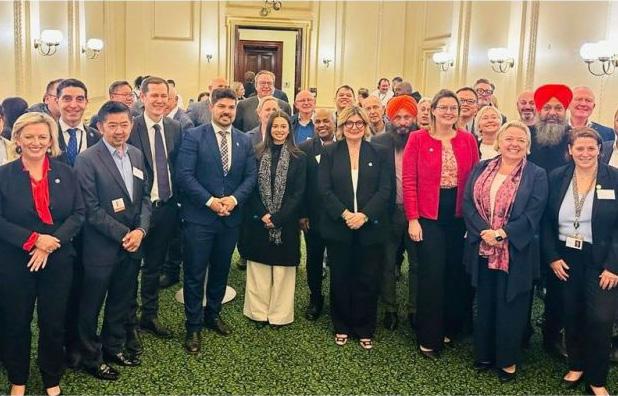
Business Chambers and Trader Groups program, providing grants of up to $20,000.
Business groups can use the funds to support their local community’s multicultural businesses and projects that drive
collaboration, skill building, and celebrate diversity.
The grant program will support locally led projects that aim to support upskilling business owners in digital and in-language marketing, local business expo events and providing opportunities for meaningful networking.
The program is part of the Labor Government's $17 million investment to support multicultural businesses with the skills and services they need to grow and succeed.
Victoria is proudly home to more than 701,000 small businesses and 34 per cent of Australian small business owners are migrants – with even more small business owners having one or more parents born overseas.
Multicultural businesses play an important role in Victoria – they broaden our global connections, create local employment opportunities and they strengthen the cultural diversity of Victoria.
Applications for the program are now open and will close on 17 July. For more information about the program and how to apply please visit business.vic.gov.au.
G’DAY INDIA | JUN 2024 www.gdayindia.com.au | M: 0412-114-383 6
MELBOURNE, May 15: The Allan Labor Government is giving multicultural businesses and traders more support, with a targeted grant program backing the positive impact multicultural enterprises have on local economies.
Minister for Small Business Natalie
Suleyman announced that applications are open for the Multicultural
NEWS VICTORIA
Gaura Travel Celebrates 17 Years of Connecting Hearts
Gaura Travel is proud to announce its 17th anniversary, marking nearly two decades of reuniting families and creating lasting memories. Founded by brothers Ashwini and Abhishek, Gaura Travel began with a simple yet powerful mission: to bridge the gap between Australia and India, bringing loved ones closer together.
From its humble beginnings in a homebased office with just two employees, Gaura Travel has grown into a global operation with over 200 employees and a 24/7 Customer Support center. This remarkable journey was fueled by Ashwini and Abhishek’s deep understanding of the emotional challenges faced by those living far from their families.
Gaura Travel has earned a reputation for trustworthiness and exceptional service, largely through word-of-mouth recommendations. They specialize in offering affordable airfares through their GDeals (Gaura Deals) and FIT Bookings, ensuring their customers can reconnect with their loved ones without breaking the bank. Their 24/7 Customer Support helps, making travel experiences smooth and stress-free.
During the pandemic, Gaura Travel's commitment to customers was unwavering. They organized 102 charter flights between Australia and India when borders were closed, ensuring families remained connected during challenging times. Their dedication has made them a dependable partner
for families, students, and professionals traveling between these two countries.
They work closely with major airlines like Singapore Airlines, Qantas, Malaysia Airlines, Cathay Pacific, Air India, Batik Air, Thai Airways, Sri Lankan Airlines, Emirates, Etihad, and Qatar Airways to offer the best deals. Their services include flexible payment options, 24/7 customer support, and postpurchase assistance, ensuring our customers’ needs are always met.

To celebrate their 17th anniversary, they are launching a "17 Years Birthday Sale" starting May 31st. This sale will offer fantastic deals for travelers planning their trips to India this year. Additionally, Gaura Travel is announcing a giveaway contest where one lucky winner will receive a free ticket to India.
Words from the Founder:
"As we celebrate 17 years of Gaura Travel, I want to extend my heartfelt gratitude to each of you. Since our inception in Melbourne, our mission has been to provide the Indian community with the best flight deals and the smoothest journey back home to India. Having served over 300,000 customers, your trust has been our greatest achievement. We're here for you 24/7, from the moment you start searching for flights
until you safely land. Thank you for trusting us to be your best way home.
We are grateful for the continuous support from our customers, media partners, airline partners, and our dedicated team. As we look to the future, we remain committed to improving our services and growing our Gaura Family. Our ATIA Accreditation and numerous awards, including the Highly Commended Award at the 2023 IABCA Australia India Impact Awards, reflect our dedication and success.”
– Ashwini Sonthalia, Founder and CEO, Gaura Travel
For more information, contact their 24/7 Customer Support on 1300 359 463 or visit the website at gauratravel.com.au.
Gaura Travel Your Best Way Home

www.gdayindia.com.au | M: 0412-114-383 G’DAY INDIA | JUN 2024 7
ADVERTORIAL
New Complaint Form To Tackle Dodgy Rentals
MELBOURNE, Jun 5: Victorians who suspect properties available for rent are being falsely advertised or do not meet minimum standards can now alert Consumer Affairs Victoria (CAV) directly through a new complaint form online.
Victorians looking for a rental property are urged to use the form to report concerns, a process that only takes about five minutes to complete and can be submitted anonymously.
Backed by the Allan Labor Government’s $4 million renting taskforce, the form will make it easier to report issues with properties being put up for rent – including inaccurate descriptions or images used to advertise the property, and breaches of rental minimum standards such as the lack of a functional kitchen or lockable external doors.
Significant penalties will apply to estate agents and residential rental providers who do the wrong thing, with maximum penalties for individuals exceeding more than $11,000 and $57,000 for businesses. Higher penalties can also apply under the Australian Consumer Law for misleading advertisements or other false representations.
Prospective renters, real estate professionals and other members of the public
can all use the rental property report form after inspecting a property in person or online, allowing them to provide evidence of their complaint including uploading photos to show the difference between the property advertisement and the property at inspection.
Allowing a new renter to move into a rental property that doesn’t meet minimum standards is a criminal offence and evidence in the form will support the renting taskforce’s work to monitor compliance with the law and target inspections and enforcement action.

The renting taskforce will be embedded within CAV, with recruitment currently underway for extra intelligence analysts, investigators and lawyers.
The new reporting form builds on the Labor Government’s Housing Statement, which pledges to ban all types of rental bidding, restricting rent increases between successive fixed-term rental agreements, and delivering
the recently announced $7.8 million Rental Stress Support Package to support tenants doing it tough.
To access the advertised rental property report form, visit consumer.vic.gov.au/rentallisting.
Renters wanting to raise issues with their current rental properties can continue to use the general enquiry form at consumer.vic.gov. au/contact-us/resolve-your-problem/generalenquiry.

G’DAY INDIA | JUN 2024 www.gdayindia.com.au | M: 0412-114-383 8
Australian Police warns of frequent road accidents during winter afternoons Empowering Diverse Women in Leadership

MELBOURNE, Jun 6: Police in Victoria called on motorists to take extra care, as crash data suggested that afternoon is a dangerous period during winter.
Victoria Police noted in a statement that over the last five years, on average, 43 per cent of collisions resulting in injury occurred between midday and 6:00 p.m. local time in winter.
There were around 7,800 injury collisions recorded during the time period between 2019 and 2023.
According to the state police, the period from 12 to 6 p.m. on Friday was regarded as the most dangerous time
between June and August overall, with around 1,200 injury collisions and 21 fatal collisions registered over the five years.
On regional roads, injury collisions most commonly occurred on Saturdays between 12 and 6 p.m. local time during the winter months.
Victoria Police noted that the authority's presence would be highly visible on major arterial roads and paths leading to alpine areas, given the snow season set to commence this weekend.
Last year, police issued more than 6,500 infringements statewide, with 2,652 motorists detected speeding, 366 detected for drink and drug driving offences, and 224 caught using their mobile phones behind the wheel.
"We know it's a time of day when there's a lot of traffic on the roads but in the colder months, it's also darker earlier and motorists have to contend with wet weather," said Victoria Police Road Policing Assistant Commissioner Glenn Weir.
"This analysis should serve as a reminder to all motorists heading into this long weekend to take extra care, particularly if the weather is challenging, and you have to factor in poor visibility or conditions like rain, ice, or snow," Weir added.
(IANS)
MELBOURNE, Jun 3: The Allan Labor Government is empowering women from a range of diverse backgrounds to reach their leadership aspirations, with applications now open for two programs that support culturally diverse women right across the state into leadership roles.
Minister for Women Natalie Hutchins today announced that applications are now open for the Women of Colour Executive Leadership Program which is backed by a $180,000 investment by the Labor Government to support the nation-leading program.
The Labor Government knows that your gender should not determine your choices in life – education, career opportunities, financial security and health should all be equally accessible regardless of your gender.
Women of colour face additional barriers in their careers and the Women of Colour Executive Leadership Program provides tangible support for those working in a range of sectors including notfor-profit and community sectors, corporate and the Victorian Public Service.
The 2024 program will support 16 women to navigate the unique barriers that women of colour face through workshops, mentoring and coaching.
Previous participants include Arshin Zaman, an engineer who is passionate about improving diversity, equity and inclusion across the industry, and Lama Tiavo who is a manager in a private sector consultancy, leading work on commercial strategies across the country.
The Labor Government was the first to introduce gender responsive budgeting in 2021 and continues to drive change to make the world a fairer place for women and girls.
To learn more about the program and apply, visit vic.gov.au/women-colour-executive-leadershipprogram

www.gdayindia.com.au | M: 0412-114-383 G’DAY INDIA | JUN 2024 9
BJP Secures Third Term in 2024 Indian General Elections Amidst Declining Majority
High Voter Turnout and Opposition Gains Highlight India’s Largest Democratic Exercise
NEW DELHI, Jun 10: The 2024 Indian general elections, held from April 19 to June 1, were a monumental event in the country’s democratic history. With over 968 million eligible voters, it was the largest electoral exercise globally. Over 640 million voters participated, including an unprecedented 312 million women, reflecting the increasing political engagement across India's diverse demographics.
Election Results and Political Dynamics
Prime Minister Narendra Modi's Bharatiya Janata Party (BJP) sought a third consecutive term amidst high expectations and significant challenges. Despite their strong campaign, the BJP saw a reduction in their seat count, winning 240 seats compared to 303 in the 2019 elections. Nonetheless, the National Democratic Alliance (NDA), which includes the BJP, secured a majority with 293 seats in the 543-member Lok Sabha, allowing Modi to retain his position as Prime Minister.
The opposition, led by the Indian National Congress (INC), formed a coalition named the Indian National Developmental Inclusive Alliance (INDIA) in 2023 to present a united front against the BJP. This strategic move paid off, as the INDIA coalition won 234 seats, with the INC itself securing 99 seats. This significant gain marked the resurgence of the Congress party, earning them the status of Official Opposition for the first time in a decade.
Voter Turnout and Participation
The 2024 general elections were distinguished by their impressive voter turnout. Over 640 million of the 968 million
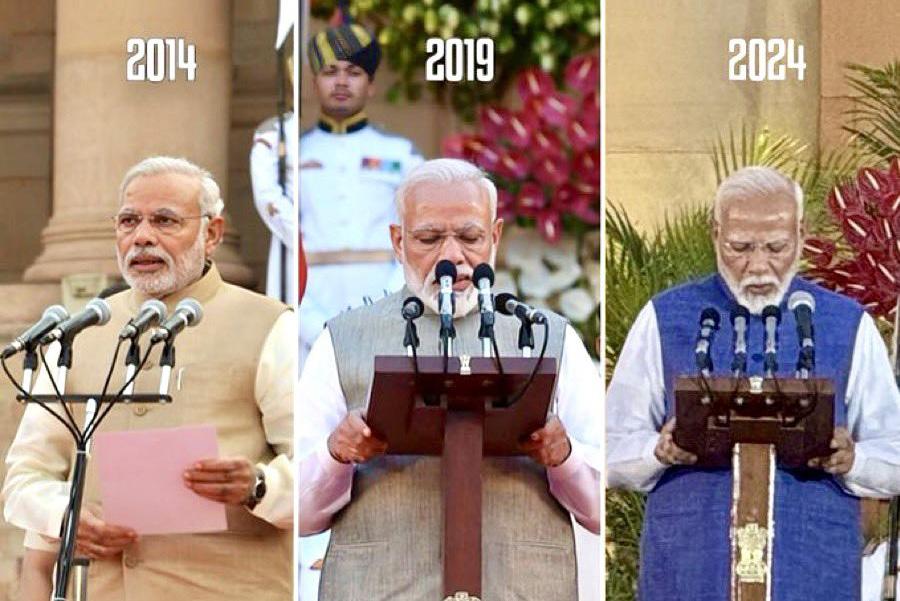
eligible voters cast their ballots, making it one of the most participatory elections in India's history. The election saw a particularly high participation rate among women, who constituted nearly half of the total votes cast. This level of engagement underscores the vibrant democratic spirit and the evolving political consciousness in India.
Election Phases and Procedures
Conducted in seven phases across 36 states and federal territories, the election spanned over 44 days. This phased approach was designed to manage the logistical challenges of conducting elections in the
various challenges and logistical complexities.
Challenges and Controversies
The 2024 elections were not without their share of controversies. Reports of Electronic Voting Machine (EVM) malfunctions surfaced, raising concerns about the integrity of the voting process. Additionally, the BJP faced criticisms for inadequate action against hate speeches and accusations of political suppression. These issues highlighted the
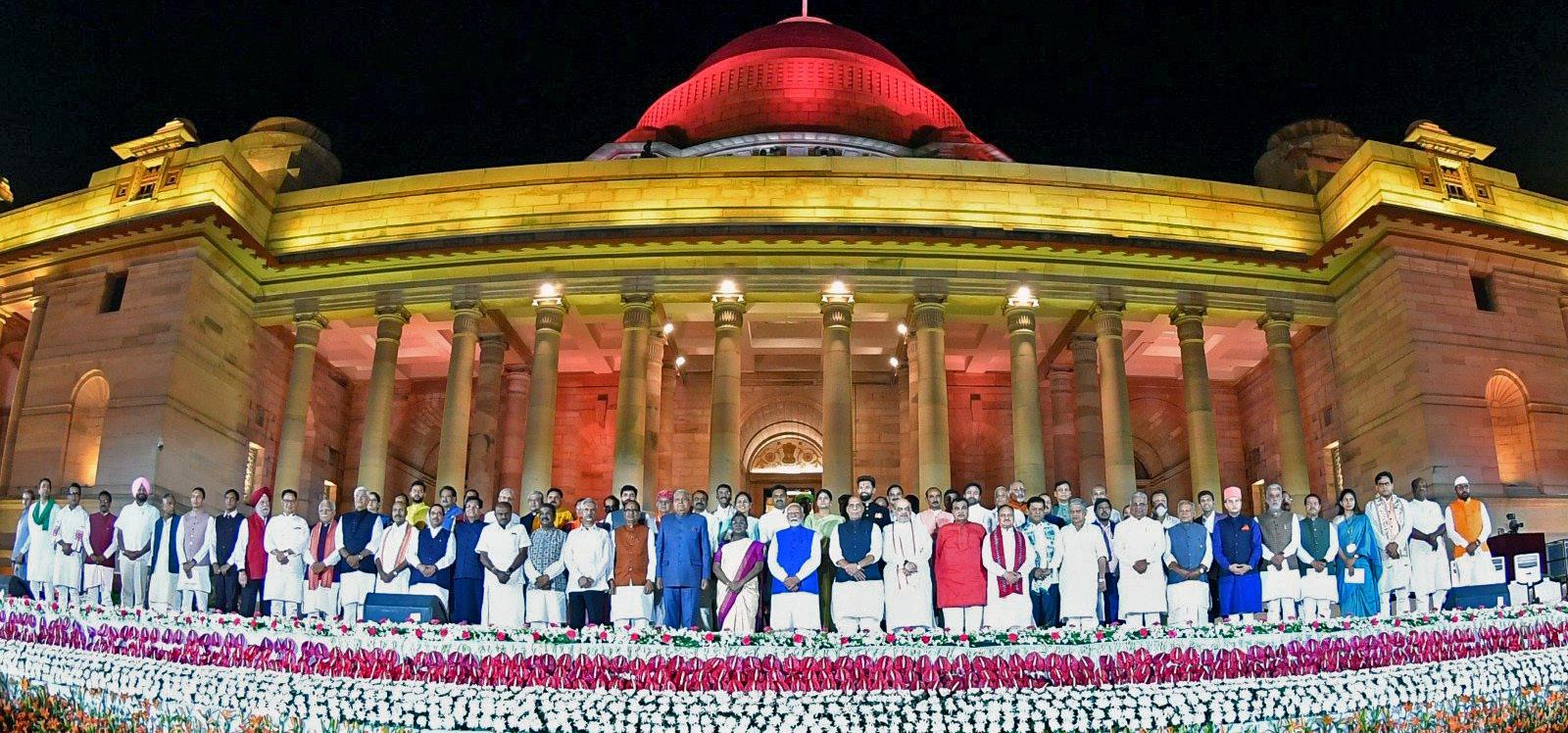
G’DAY INDIA | JUN 2024 www.gdayindia.com.au | M: 0412-114-383 10 INDIAN ELECTION 2024
world's largest democracy. The Election Commission of India implemented extensive measures to ensure a smooth electoral process, despite
ongoing challenges of managing a largescale electoral process in a diverse and populous country like India.
Historical Context
India's political landscape has experienced significant changes over the past few decades. The Congress party was the dominant force in Indian politics until the early 1990s, when the BJP began to gain substantial electoral strength. The BJP's decisive victory in the 2014 elections ended three decades of Congress dominance, ushering in a new political era. Subsequent victories in 2014 and 2019 solidified the BJP's control, relegating the Congress party to a marginal role.
The 2024 elections, however, indicate a potential shift in this dynamic. The Congressled coalition's significant gains suggest a more competitive and pluralistic political environment in the coming years. This resurgence of the opposition marks a critical juncture in India's political narrative, signaling a possible return to a more balanced twoparty system.
Prime Minister Modi's Leadership
Narendra Modi, who has been the Prime Minister since 2014, is set to continue in his role for a third term. This term, however, will be his first leading a coalition government, a significant departure from his previous terms where the BJP held an absolute majority. Modi's leadership has been characterized by a focus on economic development, infrastructure projects, and a strong stance on national security. Despite the BJP's reduced majority, Modi's ability to secure a third term underscores his continued influence and popularity.
The Role of Coalition Politics
For the first time since taking office, Modi will lead a coalition government, with key allies such as the Telugu Desam Party (TDP) and the Janata Dal (United) playing crucial roles. This coalition dynamic presents both opportunities and challenges. While it allows for broader representation of regional interests, it also necessitates careful negotiation and consensus-building among
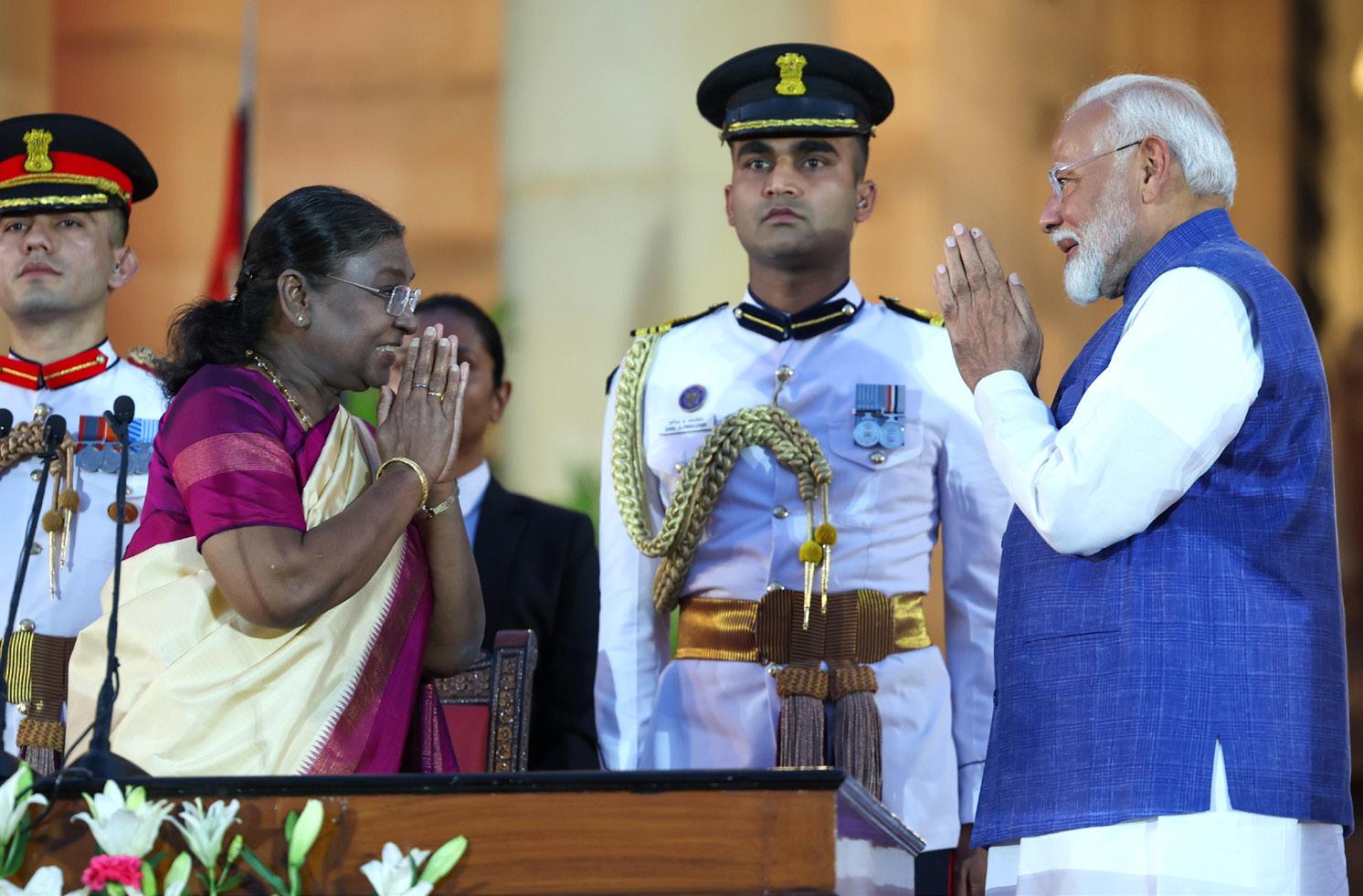
diverse political partners.
Future Implications
The results of the 2024 elections have far-reaching implications for the future of Indian politics. The BJP's reduced majority suggests a need for introspection and strategic recalibration within the party. For the Congress and its allies, the gains made in this election provide a foundation for rebuilding their political influence.
As India moves forward, the evolving dynamics between the ruling BJP and the opposition will shape the country's political landscape. The increased participation of women and other underrepresented groups in the electoral process is a positive sign of a more inclusive democracy. The challenges faced during the elections also highlight the need for continued reforms and improvements in the electoral system to ensure its integrity and effectiveness.
Conclusion
The 2024 Indian general elections have reaffirmed the robustness of India’s democratic process. Despite facing
numerous challenges, the elections saw high voter turnout and significant political engagement across the country. As Prime Minister Narendra Modi begins his third term, leading a coalition government for the first time, the future of Indian politics promises to be dynamic and closely contested. The resurgence of the opposition and the evolving political landscape indicate a vibrant democracy, ready to address the aspirations and challenges of its diverse population.
(Gday India News Desk & Agencies)
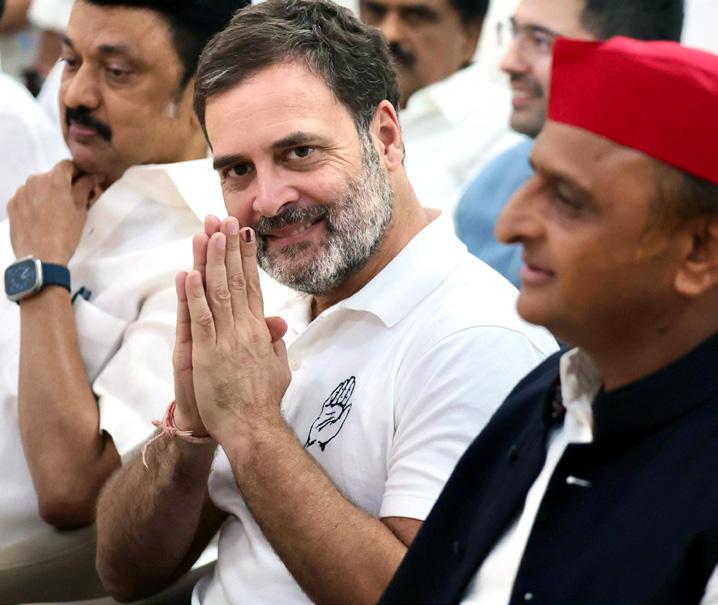
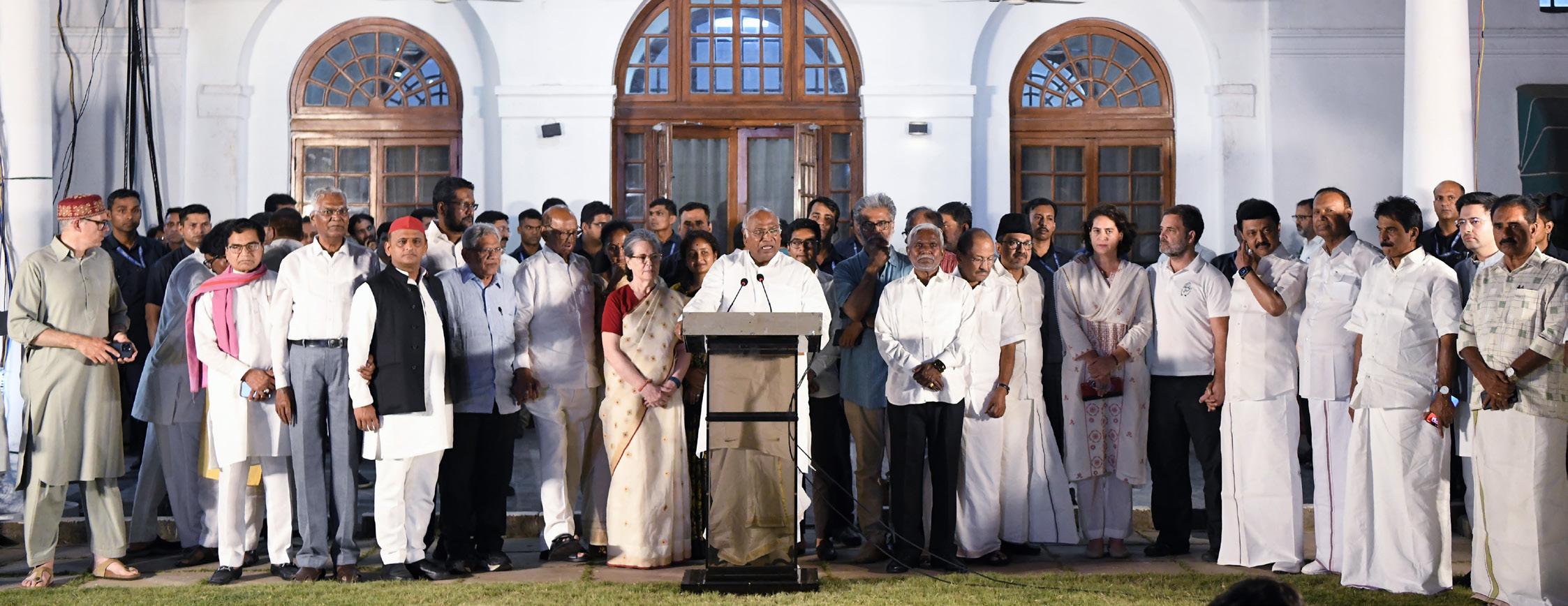
www.gdayindia.com.au | M: 0412-114-383 G’DAY INDIA | JUN 2024 11
Australia seeks inputs on developing 'new roadmap' for closer economic engagement with India

NEW DELHI, Jun 3: The Australian government has invited public submissions as it prepares a new roadmap for the country's closer economic engagement with India. The roadmap will not only take stock of Australia's existing economic initiatives with India but also explore innovative ways of doing more together.
"There has never been a better time to engage economically with India: already the most populous country in the world, India's economy is growing at pace. In 2023, India was our fourth-largest export market and is on track to be the world's third-largest economy by the end of this decade. Australia is well
positioned to both benefit from and contribute to India’s growth story – if we target our efforts wisely," believes Australia's Department of Foreign Affairs and Trade (DFAT).
The Department mentioned that work on both sides in recent years has delivered results, including through the Australia-India Economic Cooperation and Trade Agreement (ECTA), the opening of a Consulate General in Bengaluru - which was matched by India's in Brisbane - and the establishment of the Centre for Australia India Relations. Alongside this, the next stage of trading relationship, the Comprehensive Economic Cooperation Agreement (CECA), is currently under negotiation between the two countries.
As the relationship between Quad partners continues to expand both strategically and economically, DFAT detailed that there have been as many as 23 Australian ministerial visits to India and 15 Indian ministerial visits to Australia since May 2022.
Besides the "high tempo of senior Ministerial visits," the India-Australia 2+2 Foreign and Defence Ministerial Dialogue, the annual Foreign Ministers Framework Dialogue, joint hosting of the Indian Ocean Conference in February 2024, and working closely on the Quad initiatives have been the highlights of partnership between India and Australia.
"Our partnership with India will be crucial to the Albanese government's vision for 'A Future Made in Australia'. The new roadmap will help secure Australia's place in a changing global economic and strategic landscape and help make Australia a renewable energy superpower," stated DFAT.
The public submissions, which are open till August 5, aim at seeking inputs to the roadmap from voices in Australia and India, especially from businesses working in both countries, research centres and academia, members of Indian-Australian communities, India-focused NGOs and civil society organisations, state and territory governments, etc.
DFAT said that it will also be conducting consultations in state capitals in Australia and in India.
(IANS)

G’DAY INDIA | JUN 2024 www.gdayindia.com.au | M: 0412-114-383 12 NEWS AUSTRALIA
Australia, NZ pledge millions to Papua New Guinea after deadly landslide

WELLINGTON, May 28: Australia and New Zealand have pledged millions of dollars of aid to Papua New Guinea in the wake of a deadly landslide.
Several villages in the province of Enga were hit when part of a mountain collapsed in
the early hours of Friday in the remote central highlands of Papua New Guinea.
Papua New Guinea's disaster agency has said more than 2,000 people could be buried under the rubble.
New Zealand's Deputy Prime Minister Winston Peters said on Tuesday the government had approved an offer of practical and financial assistance, worth about New Zealand $1.5 million (US $923,000), to help with the response.
"The landslide in Enga Province in Papua New Guinea is an absolute tragedy. Our thoughts remain with all of those directly
affected and the people and government of Papua New Guinea," Peters wrote on social media platform X.
"The precise nature of our assistance will be shaped by the needs of affected communities, as determined through ongoing discussions with PNG [Papua New Guinea] authorities," Peters added.
Overnight, Australia's Deputy Prime Minister Richard Marles said it would provide an initial Australian $2.5 million (US $1.6 million) in humanitarian assistance.
"As a close neighbour and friend, we will be doing all we can to provide support," he wrote on X.
The Australian Defence Force was working closely with its counterparts in Papua New Guinea, Marles said. "This work is yet another demonstration of the close partnership between our nations and militaries."
Australian National University students defy order to disband pro-Palestine encampment
CANBERRA, May 27: Student protesters have defied an order to leave a pro-Palestine encampment at the Australian National University (ANU).
The ANU officially ordered protesters to pack up and leave the encampment at its main campus in Canberra's northern suburbs, citing serious safety concerns that the camp is blocking an emergency evacuation site.
After voting to defy the order and remain at the site, protesters on Monday morning formed a human
barrier around the edge of the encampment, according to state media the Australian Broadcasting Corporation (ABC).
Located in the centre of the ANU's Kambri precinct, the encampment was set up in late April as an act of protest against the university's ties with Israeli institutions amid the ongoing conflict in the Middle East.
In a statement issued, occupants of the encampment said they would continue their peaceful demonstration.


www.gdayindia.com.au | M: 0412-114-383 G’DAY INDIA | JUN 2024 13
(IANS/DPA)
(IANS)

Getting married in Australia
Refusal by a person to use the name as per their birth certificate
If a person refuses to use the name stated on their birth certificate, and does not fall within one of the scenarios described last month, another name must be recorded in the NOIM, the celebrant should outline the possible difficulties the person may face in the future when attempting to obtain an Australian passport, or other official identity documents, in the name they wish to use. If the person insists this will never be an issue for them, they may list their preferred name on the NOIM.
As with any advice or recommendations provided by a celebrant, the celebrant should make a written record of their advice, and give a copy of that advice to the person. It may be prudent for the celebrant to include a copy of the advice with the documents sent to the BDM to register the marriage,
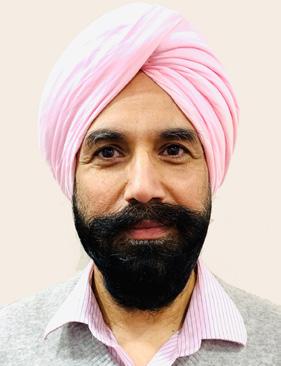
as well as keeping the advice as part of their personal records. Some BDMs will scan the letter of advice and retain it as part of the marriage register.
Each party to a marriage must give their celebrant documents that establish their date/place of birth and identity. If a party gives their celebrant documents recording different names, the celebrant should check the party has provided a sufficient chain of documents to establish their identity and link the names.
Indian-Origin Sunita Williams flies to space aboard Boeing-NASA Starliner spacecraft
Creating history, Indian-Origin NASA astronaut Sunita Williams, along with Butch Wilmore, have become the first to fly to space aboard the Boeing Starliner's first-ever crewed mission.
The 59-year-old Williams created history by becoming the first woman to fly on the maiden mission of a new human-rated spacecraft.
The crew was launched at 10:52 a.m. ET to fly aboard the United Launch Alliance’s Atlas V rocket from the Space Launch Complex-41 at the Cape Canaveral Space Force Station in Florida.
“Liftoff! Go #AtlasV! Go Centaur! Go #Starliner!” Boeing Space said in a post on X.
“Godspeed, Butch Wilmore and @Astro_ Suni!” It added.
The flight comes after several delays over the years.
The first human flight was slated on May 7, but was delayed over a helium leak and later due to an issue with the ground power supply at the ULA.
This is the third attempt, and the weather was 90 per cent favourable for the launch.
Butch, 61, will be commanding the flight, and Williams, will be piloting the flight. The duo will stay at the International Space Station

for about a week before returning to Earth aboard the reusable crew capsule. The Starliner mission aims to carry
G’DAY INDIA | JUN 2024 www.gdayindia.com.au | M: 0412-114-383 14
! Mate G’Day
astronauts and cargo for future NASA missions to low Earth orbit, and beyond. (IANS)
NEWS WORLD
Respect at Work - Workplace Sexual harassment endemic in Australia

 BY GURPAL SINGH
BY GURPAL SINGH

One in three women in workplace, suffered from sexual harassment in Australia. The statistics are shocking and clearly demonstrate the alarming endemic this country is facing. While the laws made sexual harassment and sex discrimination unlawful, the burden ultimately fell on the victim to do the initial reporting and complaining. This reactive approach to dealing with unlawful sex discrimination and harassment was not working. A shift in focus was required from this being an issue for the women to tackle and instead an issue for the society to address in a more holistic way.
In December 2022, the AntiDiscrimination and Human Rights Legislation Amendment (Respect at Work) Act 2022 (Cth) amended the Sex discrimination Act 1984 (Cth). The amendment imposes a new positive duty on the employers and persons conducting a business or undertaking to eliminate workplace sex discrimination and harassment including but not limited to workplace sexual harassment, sex discrimination and sex-based harassment; conduct that amounts to subjecting a person to hostile workplace environment on the ground of sex; and certain acts of victimisation.
As per the amendment, the focus has moved to active prevention of workplace sex harassment and discrimination rather than responding only after its occurrence. Prior to these changes, the burden ultimately fell to the victim and no advise on a sexual harassment or sex discrimination case that was identified as an issue to address without there being a victim involved. This was no criticism of the employers but rather a byproduct of the discrimination legislation often with the matter being dealt with only after the victim was prepared to speak up. The aim of many of the changes of our discrimination

and workplace laws is to provide for a safer workplace environment.
The biggest change because of amendment is that the employers and persons conducting a business or undertaking now have a positive duty to be proactive in addressing sex discrimination and sexual discrimination in the workplace. The positive duty requires proactive action to address sexual harassment in the workplace as a whole rather than treating sexual harassment as an individual grievance that is responded to reactively after the complaint is made. It requires them to take reasonable and proportionate measures to eliminate, as far as possible, unlawful sex discrimination, sexual harassment (including harassment on the ground of sex), hostile working environments and acts of victimisation.
The concept of hostile work environment is a newly introduced concept which touches the hostility on the ground of sex and sex discrimination. The new law now prohibits conduct that subjects another person to a workplace environment which is hostile on the grounds of sex. The sexual harassment may occur where a workplace environment is sexually charged or hostile, even if the specific conduct is not directed at a particular person.

The existence of these environments has the potential to increase the risk of people experiencing other forms of unlawful discrimination such as sexual harassment. The conduct could be as overt as displaying pornographic
materials openly exposing the public in the office. If there is a practice of sexual banter or inappropriate sexual joke that could result in people of one sex feeling unwelcome or excluded.
The definition of a hostile environment implies that a reasonable person must have anticipated the possibility of the conduct being offensive, intimidating or humiliating to someone by reason of their sex or characteristics of that sex. The business is now required to review its workplace with a critical lens to determine if there is a risk of the workplace being considered hostile and take reasonable and proportionate steps to prevent the same.
The imposition of a positive duty to take all steps to avoid sexual harassment in the workplace while preventing victimisation and hostile work environment. The legislative changes provide workplaces with the opportunity to further establish an organisation’s values, safety culture and positively engage with the team members in the process. It is expected that the businesses develop an action plan with a view to eliminate or reduce sexual harassment in the workplace; considering implementation or updating contracts of employment and polices which establish the organisations’ zero tolerance approach to sexual harassment; implement systems and processes for the notification and management of sexual harassment; developing a notification culture to ensure that all incidents of inappropriate conduct in the workplace are raised; delivering training on how the staff can be confident and more effective in addressing inappropriate conduct in the workplace themselves; and depending on the size of the organisation, consider a whistle blower service so that employees raise issues anonymously if needed.
15 G’DAY INDIA | JUN 2024 www.gdayindia.com.au | M: 0412-114-383 15 LEGAL
the
lawyer of Melbourne law firm, Saundh
& Smith Lawyers | W: www.sssl.com.au
Gurpal Singh is
principal
Singh
Embracing Heritage
The inspirational journey of Sanchita Abrol
Embark on a captivating voyage through the life of Sanchita Abrol, an advocate for cultural preservation and holistic well-being, as she navigates the realms of Indian classical dance, creative arts therapy, and community service.
Her story is a testament to the transformative power of embracing one's cultural roots and spreading joy through the universal language of art.
Sanchita Abrol, an Indian classical dancer, choreographer, teacher, and advocate for creative arts therapy, was born and raised in India, with her family hailing from Jammu and Kashmir.
Relocating to Australia in 2014 as an
international student, she embarked on a journey driven by her passion for public policy, a field she found limited in opportunities back in India. Her decision led her to Melbourne University, where she pursued a master’s in public policy, finding the curriculum and environment perfectly suited to her aspirations.
Upon arriving in Melbourne, Sanchita was struck by the city's vibrant multiculturalism, which offered abundance of opportunities for cultural exchange and enrichment. Immersing herself in her studies, she relished the diverse perspectives shared by
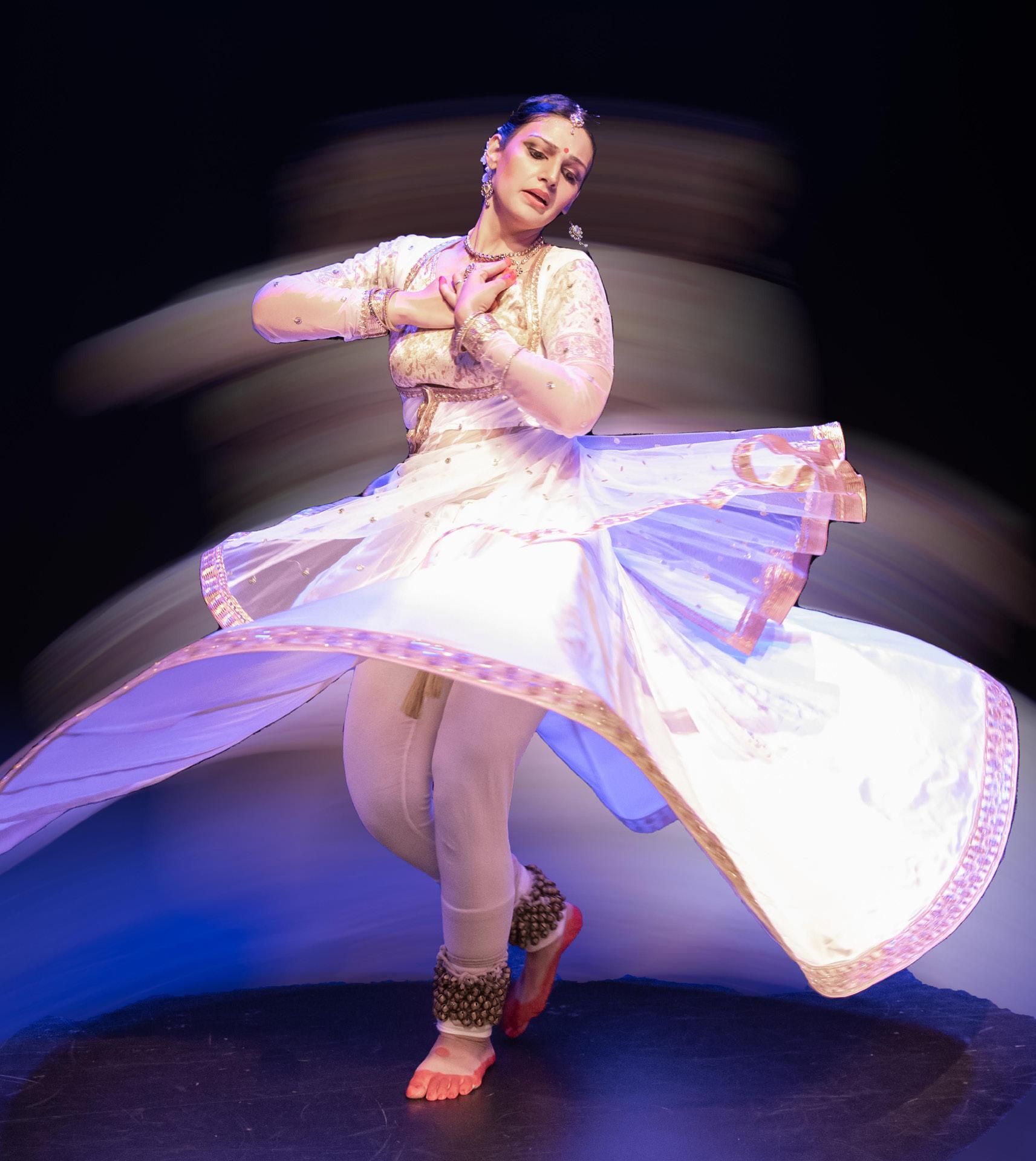

her peers and professors, fostering engaging discussions on politics and public policy.
Despite her academic pursuits, Sanchita's passion for Indian classical dance remained undiminished. Trained in Kathak, she found solace and inspiration in the rich cultural heritage she carried from her homeland. Her journey as a dancer began at the tender age of five under the tutelage of Guru Ved Vyas Ji, eventually leading her to become a disciple of Padma Shri Guru Shovana Narayan Ji. As her proficiency in dance grew, Sanchita ventured into the realm of creative arts therapy, recognizing the profound impact of artistic expression on mental health and well-being. Armed with three master's degrees—in Public Policy, Dance, and Creative Arts Therapy—she embarked on a mission to integrate South Asian arts into therapeutic practices, founding Kathaprana, a South Asian Centre for Creative Arts Therapies in
G’DAY INDIA | JUN 2024 www.gdayindia.com.au | M: 0412-114-383 16 FEATURE
Australia.
In her professional career, Sanchita has traversed a diverse landscape, working as a public policy officer, and engaging in rural development projects in India. Her commitment to advocacy and research in creative arts therapy has led her to explore innovative ways of incorporating traditional art forms into mental health frameworks.
As an Indian classical artist, Sanchita's performances have graced stages across the globe, from Hungary to Morocco, showcasing the rich swag of Indian culture to international audiences. In Melbourne, she has established her own dance academy and spearheaded the prestigious Melbourne Kathak Festival, uniting local and international artists on a single platform.
Reflecting on her journey, Sanchita attributes her success to the unwavering support of her family, the guidance of her gurus, and her deep-rooted spirituality. Inspired by the teachings of Krishna and driven by a desire to preserve and propagate her cultural heritage, she strives to instil a sense of pride and identity in her students while fostering cross-cultural dialogue and understanding.
In her pursuit of excellence, Sanchita emphasizes the importance of balance and self-care, acknowledging the challenges of juggling multiple roles as a dancer, therapist, cultural entrepreneur, policy specialist and mother. Through perseverance and a growth mindset, she tries to strike a harmonious equilibrium between her professional venture
As an active member of the Indian-Australian diaspora, Sanchita remains committed to giving back to her community and supporting those in need. From organizing relief efforts for COVID-19 in India to providing therapy for victims of domestic violence and modern slavery in Australia, she exemplifies the spirit of service and compassion instilled in her from a young age.
For Sanchita Abrol, happiness transcends the mundane; it's a pursuit intertwined with the profound teachings of the Natya Shastra. In its wisdom,
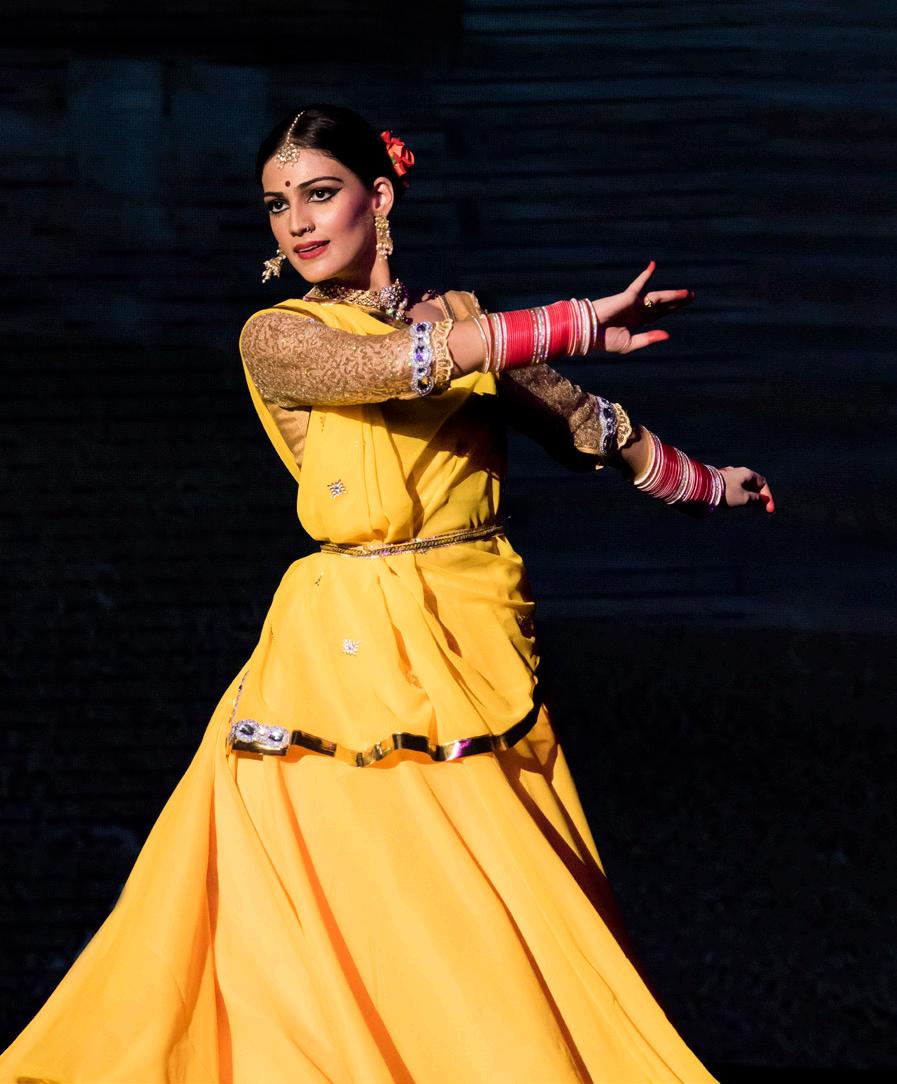
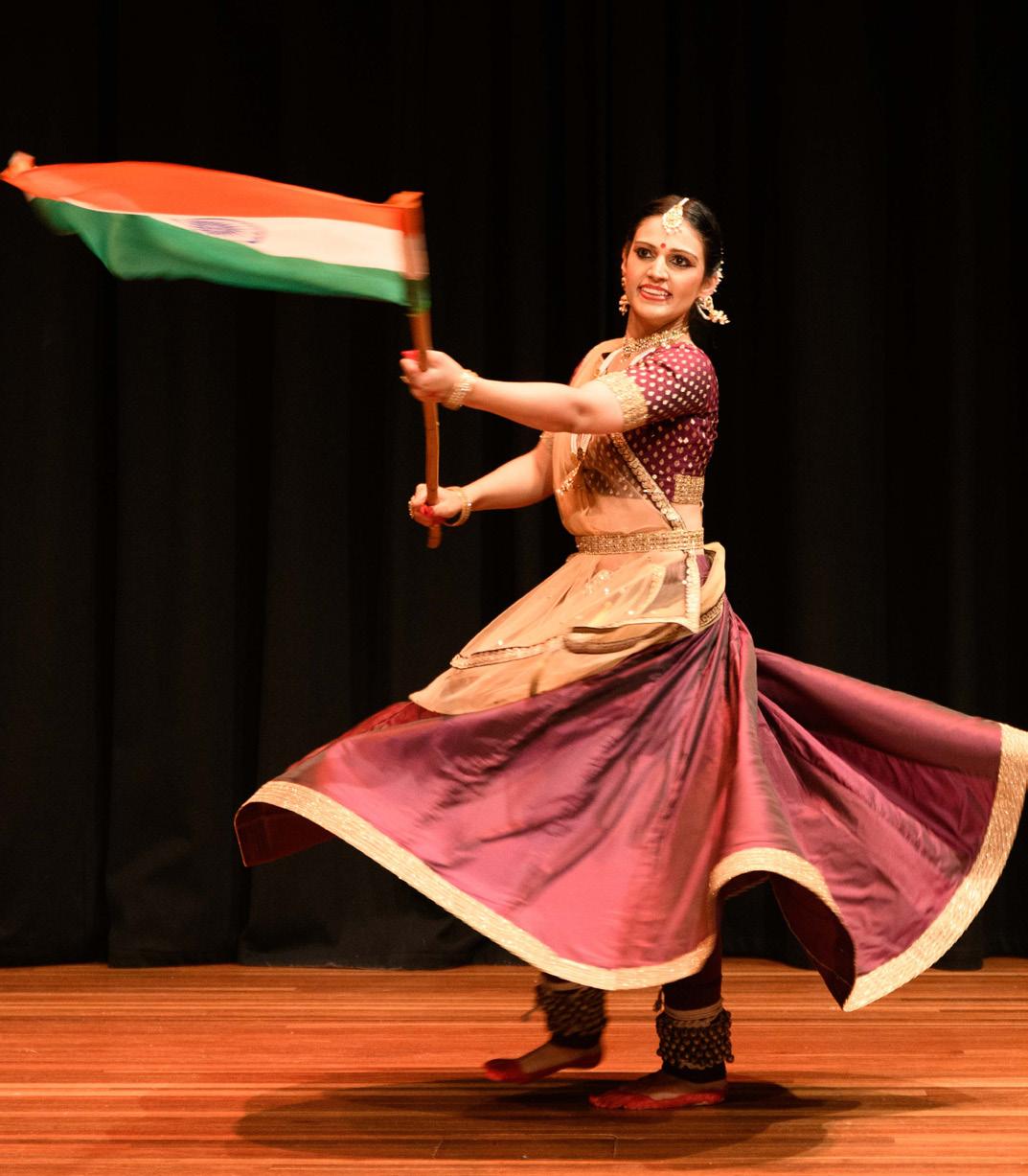
her performances on stage or her therapeutic interventions in the community, she remains steadfast in her commitment to promoting holistic well-being and cultural exchange. She pledges to continue her pioneering research into Indian philosophies, Natya Shastra, yoga, rasa theory and holistic wellbeing.
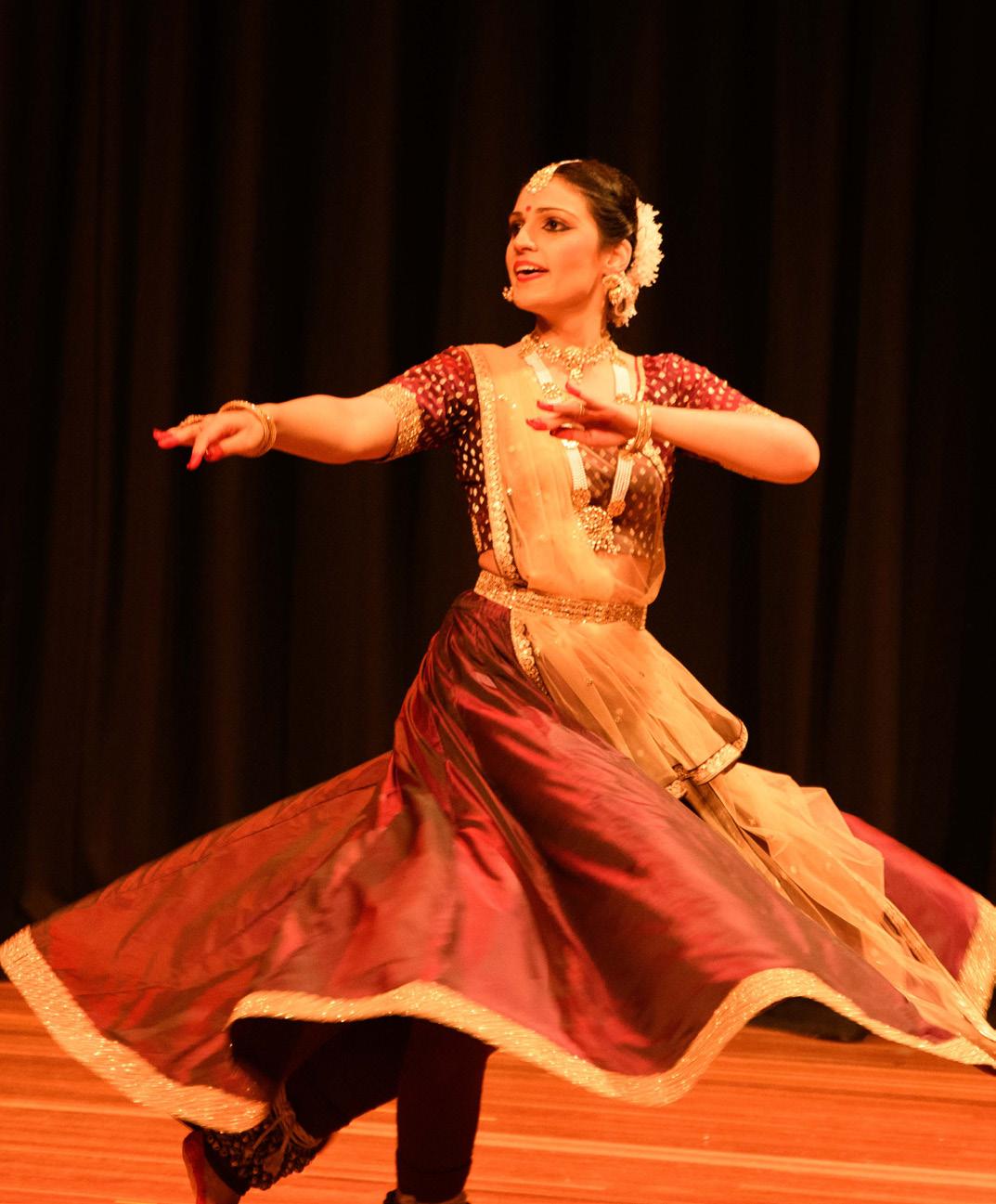
the
ancient text proclaims " rasyate anena iti rasaḥ," illuminating the essence of bliss: the rasa, that celestial elixir of joy and fulfilment. It's the ineffable tranquillity that permeates the soul, the serene stillness found in the dance's embrace—a state where every movement resonates with the harmonious symphony of existence. For her, happiness isn't merely a fleeting emotion but a timeless journey towards internal serenity, a quest to savor the essence of life's divine rasa. Looking ahead, Sanchita envisions a future where she continues to inspire and empower others through her art and advocacy. Whether through
In navigating the challenges that often accompany relocation, Sanchita Abrol extends heartfelt advice to newcomers, urging them to carry the precious fabric of culture wherever they may roam. Like layers of an onion, their identity may be intricate and multifaceted, yet each layer contributes to the richness of their being. Embracing one's cultural heritage is not just a matter of pride but a source of profound solace and resilience amidst the upheavals of change.
In the intricate mosaic of her life, Sanchita Abrol's journey seamlessly intertwines the timeless elegance of Indian classical dance, the profound impact of creative arts therapy, and the unwavering essence of resilience and compassion. With every stride she makes, she imparts a lasting legacy upon the world, imbuing hearts with enrichment and souls with jubilation through the universal medium of art and culture.
As her footsteps echo through the corridors of time, Sanchita's radiant spirit continues to illuminate the path for generations to come, inspiring countless souls to embrace their passions, pursue their dreams, and celebrate the boundless beauty of the human experience.
By Nandita Chakraborty
www.gdayindia.com.au | M: 0412-114-383
A Spiritual Odyssey
Reflecting on the Journey of Self-Discovery and Interfaith Exploration Inspired by Pina’s Spiritual Quest
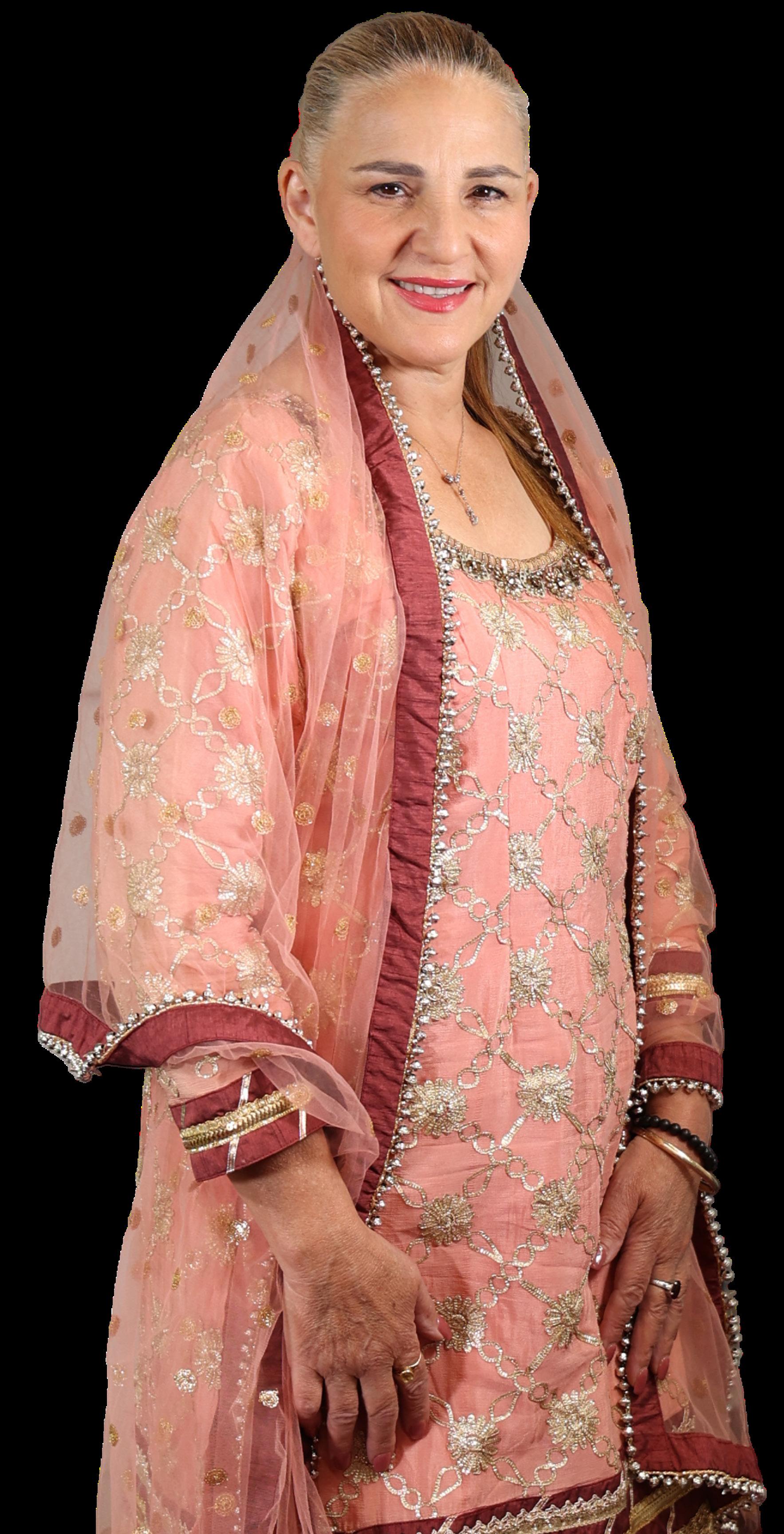
Pina Madafferi, a devoted wife, mother of four, grandmother of three, and a seasoned meditation practitioner, embarked on a transformative journey of self-discovery and spiritual enrichment several years ago. Born and raised in Melbourne to an Italian Catholic family, Pina's spiritual quest took an unexpected turn when she delved into the practice of meditation, leading her to explore diverse spiritual traditions, including Sikhism.
As her story unfolds, Pina's narrative serves as a poignant reminder of the boundless possibilities that await those who dare to believe in themselves. Her journey underscores the inherent potential within everyone to chart their course towards spiritual enrichment and fulfilment.
Pina’s journey into meditation began around four to five years ago, sparked by a retreat in India that included meditation sessions. Captivated by the serenity and inner peace it offered, Pina returned home and embarked on a path of deeper exploration. Three years ago, she undertook a holistic meditation course, delving into various facets of meditation, including trauma meditation and meditation with children. Through this practice, she found not only inner peace but also a sense of fulfilment.
Pina's encounter with the Sikh community, particularly her visits to the Sikh Gurdwara in Blackburn, opened doors to a whole new spiritual realm. Entranced by the tranquillity and sense of equality within the Gurdwara, she felt drawn to the spiritual practices and the community's ethos of selfless service. Despite being rooted in her Catholic faith, Pina found resonance in the Sikh principles of equality and selflessness.
Her experiences at the Gurdwara left an indelible mark on her spiritual journey, enriching her understanding of spirituality and meditation.
Pina discovered a profound sense of spiritual reality within herself, often experiencing moments of transcendence during prayers and meditation sessions. While she acknowledges the differences between Sikh prayers and her personal meditation practice, she finds value in both, weaving elements from each into her spiritual journey.
The Sikh community's emphasis on equality and service deeply influenced Pina's personal and spiritual growth. Immersing herself in the Gurdwara's atmosphere, she felt a sense of unity and camaraderie, transcending societal boundaries. Through her interactions and experiences within the Sikh community, Pina found her spirituality enhanced, leading to deeper insights and connections.
Despite her Catholic upbringing, Pina embraced her exploration of Sikhism as a complement rather than a contradiction to her faith. She believes in the universal nature of spirituality, recognizing the commonality in the pursuit of divine connection across religions.
While she remains rooted in her Catholic beliefs,
G’DAY INDIA | JUN 2024 www.gdayindia.com.au | M: 0412-114-383 18 FEATURE
Pina finds solace and inspiration in her interactions with the Sikh community, enriching her spiritual journey.
Balancing her roles as a mother, grandmother, and meditation teacher, Pina finds harmony in blending her familial responsibilities with her spiritual pursuits. Dedication to her family coexists seamlessly with her passion for meditation, each enriching the other. Through careful balance and prioritization, she ensures that each aspect of her life receives the attention it deserves.
Pina's journey serves as a testament to the power of belief and determination. Overcoming challenges and societal expectations, she pursued her educational and spiritual aspirations with unwavering resolve. From returning to school in her mid-30s to embracing meditation and exploring Sikhism, Pina's journey reflects her commitment to personal growth and self-discovery.
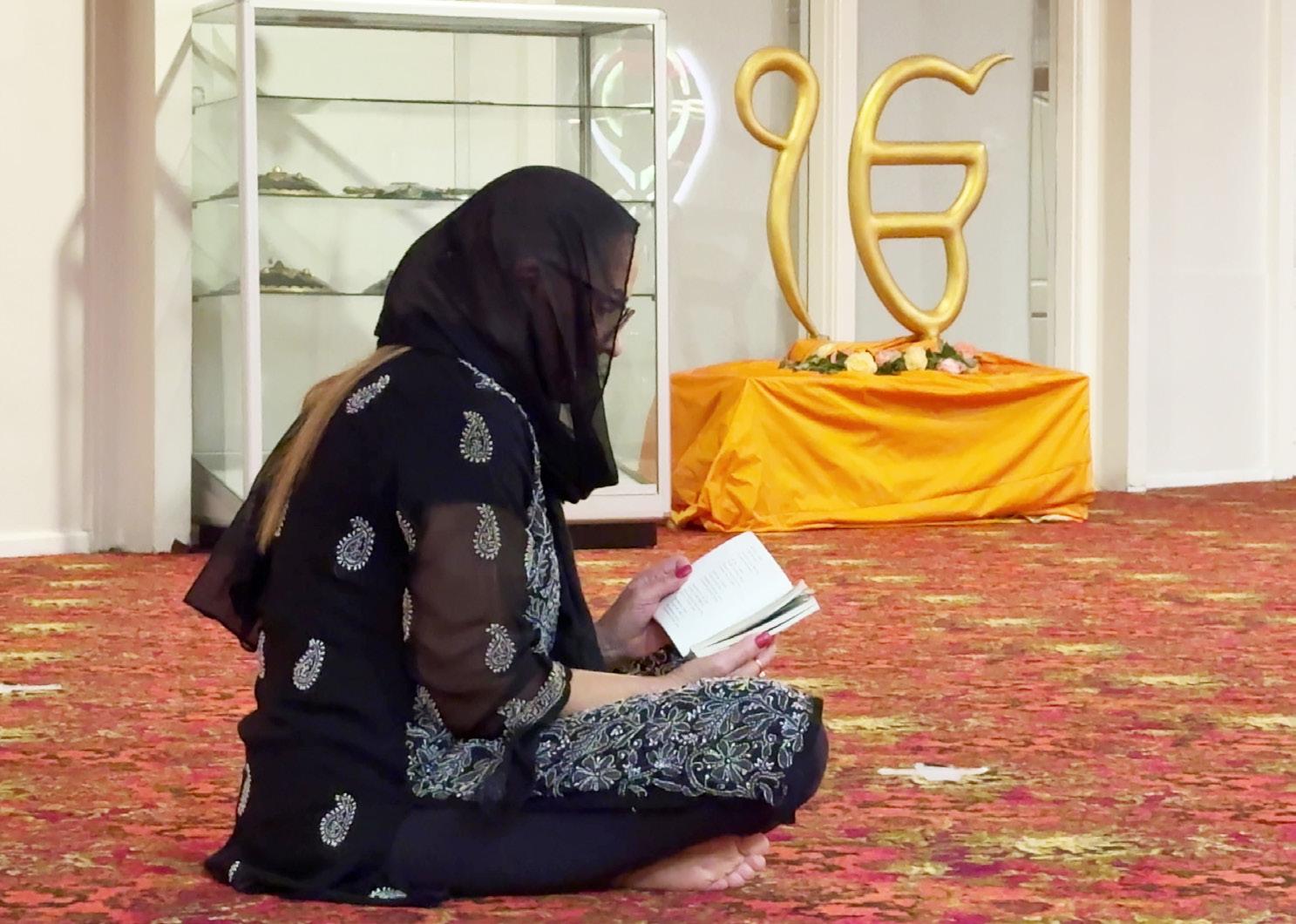
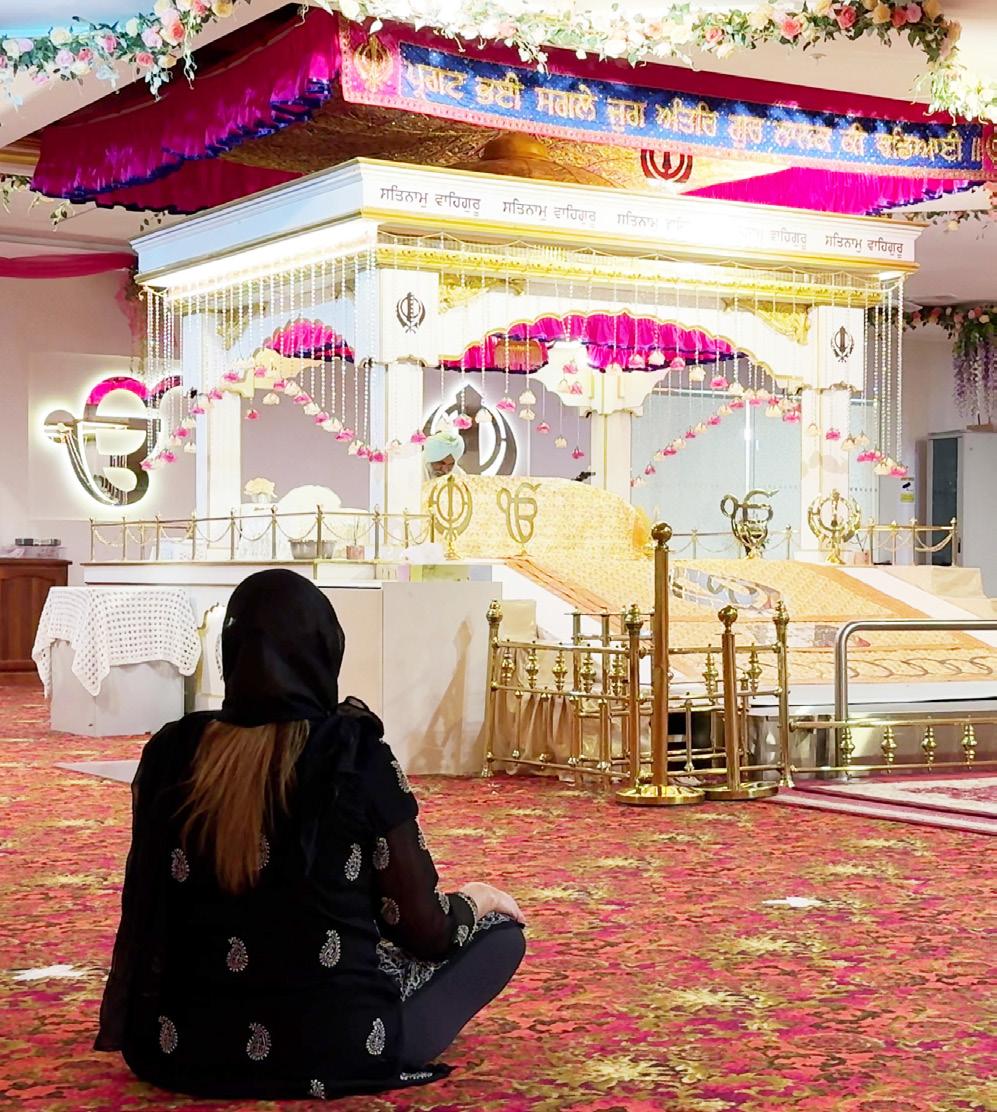
Gratitude forms the cornerstone of Pina's outlook on life, as she acknowledges the blessings and opportunities that have shaped her journey. Through moments of reflection and introspection, she finds happiness in the simple joys of family, community, and spiritual fulfilment.
Her journey continues to unfold, guided by faith, resilience, and resolute commitment to personal and spiritual growth.
Pina’s steadfast belief in the transformative potential of self-belief and proactive pursuit of spiritual fulfilment and inner peace is truly commendable.
Through her dedicated practice of meditation, she exemplifies a profound understanding of the power of personal
agency in shaping one's spiritual journey.
Through her odyssey, she not only unveils the potential for personal evolution but also illuminates the interconnectedness that binds humanity together. Her dedicated practice, she unveils layers of profound understanding and wisdom, illuminating the transformative potential that lies within.
In essence, Pina Madafferi’s journey epitomizes the transformative power of spirituality and the boundless possibilities
that arise from belief in oneself and a willingness to embrace new paths. Through her experiences, she reminds us of the profound connections that exist beyond religious boundaries and the inherent potential within everyone to embark on a journey of self-discovery and spiritual enrichment.
Beyond the confines of religious dogma, Pina's journey transcends boundaries, weaving a tapestry of interconnectedness and unity.
Through her experiences, she unveils the universal threads that bind humanity together, reminding us of our shared quest for meaning and enlightenment. In embracing new paths and experiences, she exemplifies the courage and resilience required to embark on a journey of selfdiscovery.
By Nandita Chakraborty

www.gdayindia.com.au | M: 0412-114-383 G’DAY INDIA | JUN 2024 19
BUMRAH, HARDIK, PANT STAR AS INDIA BEAT PAKISTAN BY SIX RUNS IN NEW YORK
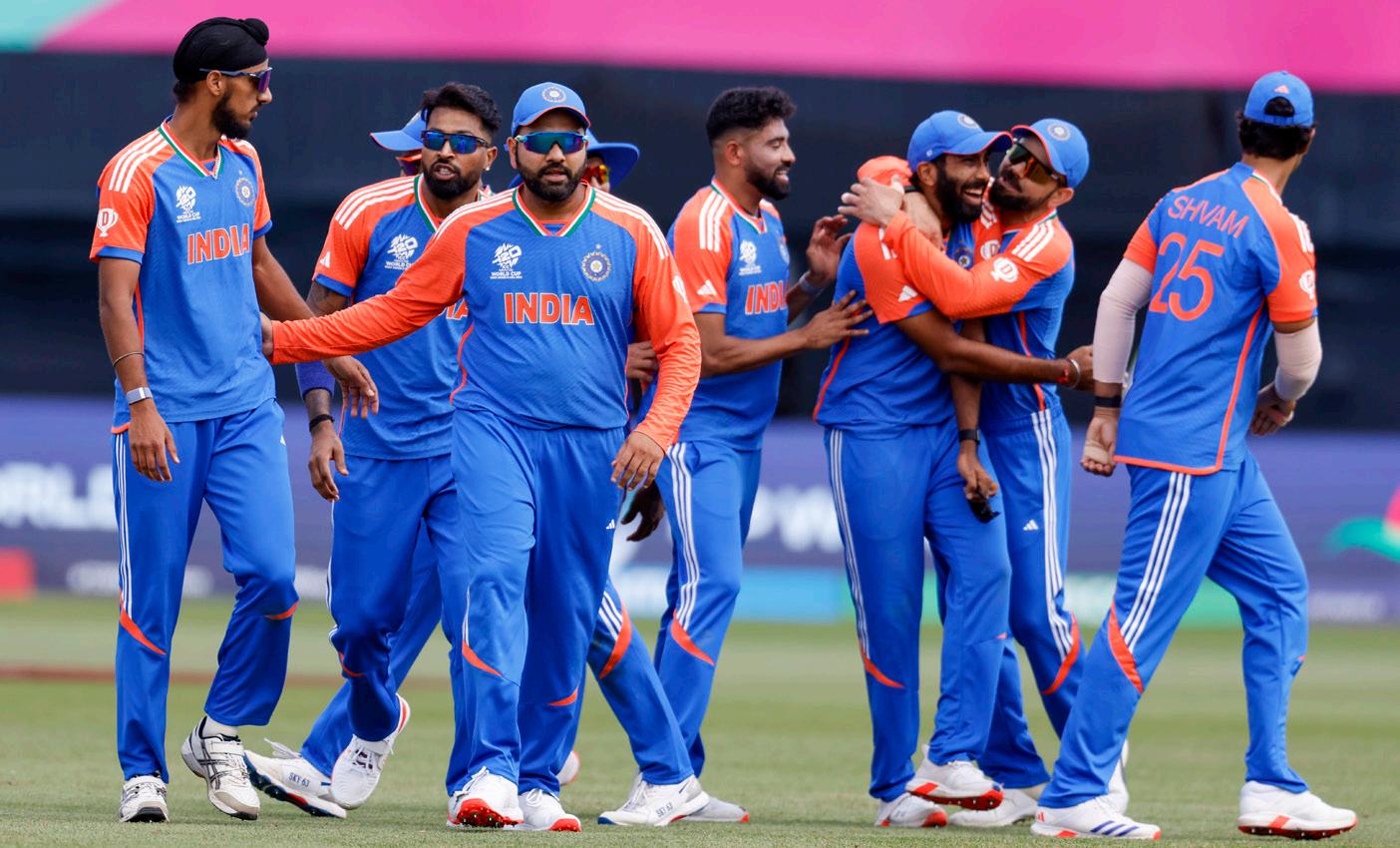
NEW YORK, Jun 10: Jasprit Bumrah showed why he’s one of the best bowlers in the world through his sensational spell of 3-14, including 15 dot balls, as India successfully defended 119 to beat Pakistan by six runs in a highly anticipated Men’s T20 World Cup match at the Nassau County International Cricket Stadium on Sunday.
After fast bowlers Naseem Shah and Haris Rauf took identical figures of 3-21 as Pakistan bowled out India for just 119 in 19 overs, with Rishabh Pant top-scoring via 42 off 31 balls, India clawed their way back in, thanks to Bumrah’s heroic spell, starting from him taking out Mohammad Rizwan.
He also got excellent support from Hardik Pandya, who took 2-6 from two overs after conceding 18 in his first two overs. Mohammed Siraj, Arshdeep Singh and Axar Patel took a wicket each to ensure Pakistan, who were 80/3 at one point, were restricted to 113/7, as India successfully defended their lowest total ever in T20Is in a remarkable low-scoring heist.
Chasing 120, Babar Azam began with a punchy on-drive off Siraj, while Muhammad Rizwan was dropped on seven by long leg off Bumrah. Azam authoritatively pulled Bumrah for four, before the fast bowler had the last laugh when his back of the length ball got extra bounce and seam movement to take his outside edge to first slip.
But India bounced back on the first ball after drinks break as Axar trapped Usman lbw at the crease with a slider coming from wide of the crease, with replays showing it would have crashed into leg stump.
With boundaries not coming, India continued to increase the pressure and resulted in Iftikhar Ahmed took on a full
toss from Bumrah, but holed out to fine leg, who almost collided with square leg, as his spell became the real differentiator between winning and losing for India.
Despite an over-rate penalty forcing India to have an extra fielder in the 30-yard circle, Arshdeep caught inside edge of Imad’s bat on a yorker which Pant caught safely. Despite Arshdeep being hit for two fours by Naseem, India ensured they pulled off a remarkable heist to seal a memorable win over Pakistan.
Earlier, on a tricky pitch where ball stopped on batters occasionally, only three batters reached double figures for India, as Pant top-scored with 42 - a largely charmed life at the crease, where his trademark unorthodox shots got him better returns than orthodox strokes.
At one point, India was comfortably placed at 89/3 in 11 overs, before they dramatically lost the plot. Naseem, Haris Rauf and Mohammad Amir triggered an epic collapse with their brilliant bowling as India lost their last seven wickets for just 30 runs. In a bid to attack in the middle overs, India lost batters due to poor shots and kept picking out fielders, which meant they couldn’t stitch partnerships in a reckless batting performance.
After 30 minutes of rain delay, and another 29 minutes of rain enforced interruption post the first over, Virat Kohli got going with a creaming cover drive for four. But he
chased a wide delivery from Naseem and picked out point.
On the other hand, luck favoured Pant heavily – a healthy outside edge went past Iftikhar at slip for four off Amir. Immediately after, a top-edge on his wristy flick was dropped by Usman at cover and Pant’s attempt to drive again took an outside edge flying over Iftikhar for four more, as India ended a dramatic power-play at 50/2.
But from the 10th over off Haris, things changed dramatically for Pant. He lofted a slower ball over mid-off, fell over to paddle over short fine leg and flicked in the same region to pick a hat-trick of fours, followed by a lovely reverse-sweep off Imad to pick another boundary.
But Pakistan bounced back as Suryakumar Yadav picked out mid-off against Amir and Shivam Dube chipped a simple catch to Naseem off his own bowling. Amir had Pant finally running out of luck when his miscued loft was caught by mid-off moving to his left and Ravindra Jadeja chipped straight to short mid-off on consecutive deliveries.
Pakistan ensured India didn’t get to close their innings well as Rauf got Pandya flicking to deep backward square leg and had Bumrah hit straight to short cover on consecutive balls. Arshdeep’s run-out by Azam ensured India’s innings ended with one over unused, which didn’t become a factor in their stunning victory.
Brief Scores: India 119 in 19 overs (Rishabh Pant 42; Naseem Shah 3-21, Haris Rauf 3-21) beat Pakistan 113/7 in 20 overs (Muhammad Rizwan 31; Jasprit Bumrah 3-14, Hardik Pandya 2-24) by six runs.
(IANS)

G’DAY INDIA | JUN 2024 www.gdayindia.com.au | M: 0412-114-383 20 T20
I WAS BORN WITH IT: PAT CUMMINS ON HIS LEADERSHIP QUALITIES
Australia ODI skipper Pat Cummins believes that he was born with the quality of being calm while leading a side.
Cummins also led the Indian Premier League (IPL) side Sunrisers Hyderabad (SRH) in the 2024 season and had a stupendous success with the franchise, leading his team to the finals, where they lost to Kolkata Knight Riders (KKR) on May 26.
The Aussie cricketer lifted the Orange Army from the bottom half of the table and changed their fortunes with a highly aggressive style of cricket, led by himself, openers Travis Head and Abhishek Sharma.
Cummins said that the more he has played cricket, the more he has ‘mellowed’ with such qualities.
He also pointed out that nowadays, he is focusing on his own game.
“I think to some degree I was born with

it. I have always kind of had this ‘shall be right’ kind of attitude. The more I have played, the more I have mellowed a little bit in terms of not being as fiery, and you just want to concentrate on how to get
the job done. As a young bowler I wanted to puff the chest out and really get into the opposition. Nowadays I’m a bit more concentrating on my own game, and as captain trying to navigate as calmly as possible our team to, hopefully, a victory. Maybe it is experience, maybe it is [that] I try and talk about calmness a lot, so if I’m captain and I’m not calm, well, I’ll lose a bit of credibility with my team-mates,” Cummins was quoted by ESPNcricinfo’s The Cricket Monthly as saying.
“Look, I think so. On balance, when you are making so many decisions all the time, a level of calmness and consistency probably outweighs someone who’s erratic, I would say,” he added.
Cummins will be in action during the ongoing T20 World Cup 2024 in the West Indies and USA. Australia is in Group B along with arch-rivals England, Oman, Scotland and Namibia.
T20 WORLD CUP: ICC ANNOUNCES HIGHEST PRIZE MONEY OF
USD 2.45 MILLION FOR TOURNAMENT
The ninth edition of the ICC Men’s T20 World Cup will see the winners of the 20-team tournament earn at least 2.45 million USD, the highest prize money in the history of the competition, said the International Cricket Council (ICC). The prize money will be given to the winner of the tournament along with the trophy that they will lift at Kensington Oval in Barbados on June 29, from the overall USD 11.25 million pot sanctioned by the ICC. Every team receives a minimum of 225,000 USD for participating.
The runners-up will get at least USD 1.28 million while the losing semi-finalists walk away with 787,500 USD. The four teams that fail to make it out of the Super 8s will earn 382,500 USD each, while the teams placed ninth, 10th, 11th, and 12th respectively will receive 247,500 USD each.
Participants who finish in 13th to 20th places will pocket 225,000 USD. Every team receives an additional 31,154 USD for each match they win barring the semifinals and final. “This event is historic in so many ways, so it is fitting that the prize money for players reflects that. Hundreds of millions of fans around the world will be entertained by the players in what we’re hoping to be an Out of This World event,” said ICC CEO Geoff
WINNERS

Allardice.
The 55-match event to be contested between 20 teams will be played over 28 days, across nine venues in the West Indies and USA, making this the biggest ICC Men’s T20 World Cup ever. The 20 teams will be divided into four groups of five each for the first round.
The top two teams from each group will qualify for the Super 8 stage, where teams will be split into two groups of four each. Teams seeded first and second in
their groups in the first round will retain that seeding in the Super 8, provided they qualify. A1, B2, C1, and D2 finishers will be in one group, while A2, B1, C2, and D1 will be slotted in the other group.
The top two sides from two groups of the Super 8 will advance to the semifinals. The semi-finals will be held in Guyana and Trinidad and Tobago on June 26 and 27 respectively, while the final will be held in Barbados on June 29.
21 G’DAY INDIA | JUN 2024 www.gdayindia.com.au | M: 0412-114-383 21 SPORT
(ANI)
(IANS)
ARTIFICIAL INTELLIGENCE MAY OFFER COMPANIONSHIP TO THE LONELY
Artificial Intelligence (AI) technology may be key to fighting loneliness among humans, which is known to seriously impair health, according to a robotics expert. Tony Prescott, from the University of Sheffield, UK, argues in his new book The Psychology of Artificial Intelligence that “relationships with AIs can support people” with forms of social interaction.
When people feel lonely, they tend to become increasingly disconnected as their confidence plummets. AI may help “break the cycle” and give them a way to practise and improve their social skills, said Tony, a professor of cognitive robotics. While many people “describe their lives as lonely, there may be value in having AI companionship as a form of reciprocal social interaction that is stimulating and personalised,” Tony said.
An “AI companionship could help break this cycle by scaffolding feelings of self-worth and helping maintain or improve social skills. If so,

relationships with AIs could support people to find companionship with both human and artificial others,” he added.
In the book, the Professor explores the nature of the human mind and its cognitive
processes and compares and contrasts this with the way AI is developing.
He noted that the partnership of psychology and AI “can unlock further insights into both natural and artificial intelligence.” (IANS)
NEW AI TOOL TO DETECT GENDER-RELATED DIFFERENCES IN BRAIN STRUCTURE
US researchers have developed an artificial intelligence (AI) tool that shows differences in how the brains of men and women are organised at a cellular level.
While brain size, shape, and weight have been explored, only a partial picture of the brain’s layout is known at the cellular level. A detailed understanding of how biological sex impacts the brain can help boost diagnostic tools and treatments for multiple sclerosis, autism spectrum disorder, migraines, and other brain issues that work differently and with varying symptoms in men and women.
Researchers at New York UniversityLangone Health used an AI technique called machine learning to analyse thousands of MRI brain scans from 471 men and 560 women. They found that the computer programmes could accurately distinguish between biological male and female brains by spotting patterns in structure and complexity that were invisible to the human eye.
Variations in white matter -- tissue primarily located in the human brain’s innermost layer, which fosters communication between regions -- were found between the genders, revealed the study, published online in the journal Scientific Reports.

“Our findings provide a clearer picture of how a living, human brain is structured, which may, in turn, offer new insight into how many psychiatric and neurological disorders develop and why they can present differently in men and women,” said neuroradiologist Yvonne Lui, professor at NYU Grossman School of Medicine.
She noted that using machine learning to analyse entire groups of images helped remove human biases.
However, the researchers cautioned that while the AI tools could report differences in brain-cell organisation, they could not reveal which sex was more likely to have which features.
G’DAY INDIA | JUN 2024 www.gdayindia.com.au | M: 0412-114-383 22
(IANS) AI

STRATEGIES TO DEAL WITH BURNOUT AND WORK-RELATED STRESS

Hustle culture refers to a competitive environment where employees feel pressured to work strenuous hours and achieve results quickly. This type of atmosphere can lead to high levels of stress and employee burnout. Employees may be reluctant to take breaks or vacations, resulting in workdays that are extremely and unremittingly long. Working excessively long hours can cause physical and mental exhaustion, making it difficult to stay productive and complete tasks to the best of one’s ability. Furthermore, the pressure to succeed in such a competitive environment can lead to feelings of inadequacy, leading to further stress and burnout.
perceive their work environment as supportive have lower levels of burnout and higher job satisfaction. A study conducted by Gallup found that employees who feel supported by their managers are 70% less likely to experience burnout.
Utilize employee assistance programs (EAPs):
Employee assistance programs provide resources and support for employees dealing with burnout and work-related stress. The International Employee Assistance Professionals Association reported that EAPs have been shown to reduce absenteeism, increase productivity, and improve employee well-being.
Promote work-life balance:

In today’s fast-paced and demanding work environment, burnout and work-related stress have become prevalent issues. However, there are effective strategies supported by research that individuals can utilize to manage and reduce burnout and work-related stress. Let’s explore these strategies, along with data and figures that highlight their effectiveness.
Set clear boundaries:
According to a study published in the Journal of Occupational Health Psychology, employees who set boundaries between work and personal life experienced lower levels of burnout and higher job satisfaction. Research conducted by the American Psychological Association found that 44% of employees who set clear boundaries reported better well-being compared to those who didn’t.
Practice self-care:
Prioritize workload and time management: A survey conducted by the American Psychological Association found that 49% of employees who felt they had too much work experienced higher stress levels. Research published in the Journal of Occupational and Environmental Medicine indicated that effective workload management and time prioritization reduced burnout among employees by 41%.
Take regular breaks:
According to a study conducted by the University of Illinois at Urbana-Champaign, brief mental breaks during work can enhance focus and reduce stress.
The Society for Human Resource Management reported that employees who took regular breaks experienced increased productivity by 33%.
Seek social support:
A study published in the Journal of Occupational Health Psychology found that employees who received social support from colleagues had lower levels of burnout and higher job satisfaction. The Mental Health Foundation reported that having a supportive network at work can reduce stress levels by 30%.
A survey conducted by the Society for Human Resource Management revealed that 89% of employees considered work-life balance an important factor in reducing burnout and work-related stress. According to the Harvard Business Review, employees who have a good work-life balance are 21% more likely to be engaged in their work.
Regularly assess and adjust workload: It’s important to regularly assess workload and make necessary adjustments to prevent burnout. This includes delegating tasks, redistributing responsibilities, and seeking help when needed. Research published in the Journal of Applied Psychology found that employees who had control over their workload had lower levels of burnout and higher job satisfaction.

A study published in the Journal of Occupational and Environmental Medicine revealed that engaging in self-care activities, such as exercise, reduced the risk of burnout among employees.
According to the American Institute of Stress, 28% of workers who practiced regular selfcare reported lower stress levels.
Foster a supportive work environment:
Research published in the Journal of Applied Psychology suggests that employees who
Practice mindfulness:
A meta-analysis published in the Journal of Occupational Health Psychology revealed that mindfulness interventions were effective in reducing burnout and increasing overall well-being among employees. A study conducted by the National Institutes of Health found that employees who practiced mindfulness experienced a 28% reduction in stress levels.
In conclusion, implementing strategies to manage and reduce burnout and workrelated stress is crucial in today’s demanding work environment. Setting clear boundaries, practicing self-care, fostering a supportive work environment, prioritizing workload and time management, taking regular breaks, seeking social support, practicing mindfulness, utilizing employee assistance programs, promoting work-life balance, and regularly assessing workload are all effective approaches. By incorporating these strategies, individuals can enhance their well-being, increase job satisfaction, and combat burnout and work-related stress.
By Sandeep Budhiraja

www.gdayindia.com.au | M: 0412-114-383 G’DAY INDIA | JUN 2024 23
FEATURE
WHEN A PSYCHIATRIST BATTLES HER OWN DEPRESSION

It was 2020 when she started feeling anxious, and then started the act of cutting herself. It was impossible for her to stay still, there were uncontrollable spells of crying. From loss of appetite and sleep to inability to focus on anything -- she had all the classic symptoms of anxiety and depression which any psychiatrist could decipher in the first meeting itself.
Just, in this case, this was happening to a psychiatrist.
When Aashima Chander (name changed) joined the Psychiatry department of Chandigarh’s prestigious Post Graduate Institute of Medical Education and Research (PGIMER) three years back as a Junior Resident, she initially assumed it was the high-pressure job -- long working hours, strenuous academic demands and the massive number of consultations that were taking a toll on her.
“Those who make it to PGI’s post-graduate programme are overachievers and even a small dip in performance can lead to a feeling of worthlessness. And of course, there were times when I thought the teachers would think less of me -- that I am unable to cope with the pressure. I may have joined the Department of Psychiatry, but I was still a novice and did not realize that I was suffering from a mental illness for a long time. It was during a long spell of crying in the washroom, that a friend pulled me and forced me to see one of our Professors,” recalls the 28-year-old, originally from Prayagraj.
Stressing that it was a time when she was not herself, Chander remembers asking the Professor if she would ever be a good psychiatrist -- considering she was battling the

disease herself. Her doctor paused and assured her she would be a better one as she would always have a deeper idea of what her patients were going through.
Her husband, who is also a doctor pushed her to consult one. And Chandra’s mother played a special role. “She stayed with me when I was at my lowest. One day when I returned from the office, there were heart marks drawn with nail paint on every sharp object in her room -knives, and paper cutters.”
Ask her if she ever feels a certain disbelief that a mental health professional is suffering from this condition, and she smiles, “Not at all. Because I am a psychiatrist and know that this is an illness that can strike anyone.”
But Chandra recently who recently had a relapse, took a long time before she approached her consultant. “Let’s say, I was in denial -- like any other patient.”
Along with medications, what helped her were
certain observations made by her Professor during multiple sessions. “The fact that I had a tendency to always seek and thrive on appreciation, something that made me push my boundaries to what I wasn’t comfortable with and force me to overwork. he told me that this could also lead to professional abuse. Frankly, I am still changing that about myself.”
As the conversation veers to how mental illness is perceived in India even in this time and age, she feels the situation is sad across the world: “A patient is assumed to be harmful and out of control. Media and film descriptions have also added to that, there were really weird depictions even 10 years ago, although we have become somewhat more sensitive about it now. In a corporate setup, the top management tends to feel that someone with mental illness may not be able to handle the stress and then eventually turn out to be a liability. And of course, then there are psychiatric illnesses deniers who insist it is a hoax.”
The doctor, who is no longer with PGI now, applauds other professionals in her department for their sensitivity and for giving her the ‘space’. “Not that I announced my illness, but they know. And have never been intrusive. Once during my low phase, I was on emergency duty with a very strict Senior Resident. There was an immense work backlog, and I just started crying inconsolably. It was a panic attack. He sat there, kept looking at me, and did not say anything. After a while, handed me a glass of water. The act of not offering a quick fix was extremely kind.”
By Sukant Deepak
G’DAY INDIA | JUN 2024 www.gdayindia.com.au | M: 0412-114-383 24 FEATURE
UNLOCK THE SECRETS TO MAINTAINING HEALTHY HAIR

Having luscious, healthy hair is a desire shared by many. We all yearn for those shiny, vibrant locks that exude confidence and vitality. However, maintaining healthy hair requires more than just good genes or expensive products. It involves adopting a holistic approach to hair care and making mindful choices in our daily routines. In this article, Dr Saru Singh, an esteemed Aesthetic Physician specialising in hair health, shares her expert insights and practical tips on how to achieve and maintain healthy hair.
Nourish from Within:
Beautiful hair starts with a healthy body. Dr. Singh emphasises the importance of a balanced diet rich in vitamins, minerals, and essential fatty acids. Incorporate foods like salmon, eggs, avocados, spinach, and nuts into your meals as they provide essential nutrients that promote hair growth and strength. Additionally, stay hydrated by drinking an adequate amount of water daily.
Gentle Cleansing and Conditioning:
When it comes to hair care products, choose those specifically formulated for your hair type. Use a mild shampoo and conditioner that cleanse without stripping the hair of its natural oils. Massage the scalp gently during shampooing to stimulate blood circulation and promote healthy hair growth.
Avoid Heat Damage:
Excessive heat styling can lead to brittle and damaged hair. Minimise the use of hot

tools such as straighteners, curling irons, and blow dryers. When necessary, apply a heat protectant spray before styling and use the lowest heat setting possible. Embrace natural hairstyles and give your hair a break from heat regularly.
Protect
from UV Rays:
Just like our skin, our hair can also suffer from sun damage. Wear a hat or use a UV-protective hair spray or serum when exposed to the sun for prolonged periods. This helps prevent hair color fading and keeps the strands from becoming dry and brittle.
Be Gentle with Wet Hair:
Wet hair is more susceptible to damage, so handle it with care. Use a wide-toothed comb or a detangling brush to gently remove tangles, starting from the ends and working your way up. Avoid vigorous towel-drying, as it can cause breakage and frizz. Instead, use a soft, microfiber towel or an old t-shirt to gently blot excess moisture.
Regular Trims:
Regular trims are essential to maintain healthy hair. Schedule a trim every 6-8 weeks to remove split ends and prevent them from traveling up the hair shaft. This practice helps maintain hair length while promoting overall hair health.
Reduce Stress:
Stress can contribute to hair loss and other hair-related issues. Manage stress through relaxation techniques, exercise, and self-care. Incorporating activities like meditation, yoga, or regular exercise can help maintain a healthy mind and body, positively impacting hair health. Achieving and maintaining healthy hair requires a holistic approach that encompasses proper nutrition, gentle hair care practices, and overall well-being. Dr. Saru Singh, an experienced Aesthetic Physician, encourages individuals to embrace these tips and make them a part of their daily hair care routine. By following these expert recommendations, you can unlock the secrets to healthy, beautiful hair that radiates confidence and boosts your overall self-esteem.
www.gdayindia.com.au | M: 0412-114-383 G’DAY INDIA | JUN 2024 25 FEATURE
(IANSlife)


3 WAYS TO BRING IN GENTLE PARENTING INTO YOUR CURRENT PARENTING STYLE
Present-day parenting involves asking multiple questions, especially among newage parents. They spend a lot of time online gathering information about different styles of parenting and their effect on the child in the early developmental stages of their lives.
In this era of excessive information, which can often be conflicting and overwhelming, parents have to choose a parenting style that works best for their child while being compassionate and understanding towards her/ him. Gentle parenting is one such approach that parents are increasingly adopting as it
focuses more on the child as a capable being and involves a collaborative effort between the parents and the child towards fostering greater empathy, understanding, and respect in the relationship.
Here are three ways gentle parenting can be incorporated into your parenting style: Separate action from the person:
Focusing on the action rather than the person helps the child understand how to respond better in a situation and to a person. For instance, if a child is throwing a tantrum and making a fuss by screaming, the parent should

shift attention from the child to the action, in this case, it’s screaming. Instead of telling the child, “You should not scream,” saying, “Screaming will not help here. Let us discuss this more,” is a much better approach to defusing the situation.
Modelling plays a key role in understanding emotions:
Parents that express their emotions well and regulate them wisely become great models to help the child understand how to handle their own emotions. Simple day-to-day scenarios can teach children this. For example, a parent can say, “Oh, I was feeling stressed as I was late for my meeting today due to heavy traffic on the road. However, I did self-talk and that helped me not panic while I was late.”
Work collaboratively:
Parents often adopt an ‘instructive’ mode of teaching children certain behaviours, or even while conducting simple tasks like tying laces. However, rather than ordering or instructing them, working together and helping them understand goes a long way. This gives children the freedom to create their paths and ways of doing things.
Children learn by example, watching their parents who are their world for the first few years of their lives. Making them feel loved for who they are makes them stronger and more resilient to the world around them. It also proves beneficial for parents to be kinder and more compassionate towards themselves.
By Meghna Yadav
G’DAY INDIA | JUN 2024 www.gdayindia.com.au | M: 0412-114-383 26 RELATIONSHIPS

WHY HUMANS FALL FOR LIES AND CONSPIRACIES
Human brains are hardwired to believe lies and conspiracy theories that have been brought about by politicians, dictators and social disruptors, according to a new book that analyses the power of language on people’s brains.
The book “Politics, Lies and Conspiracy Theories”, by Marcel Danesi Professor of Semiotics and Linguistic Anthropology at the University of Toronto, Canada, analyses the speeches of dictators including Mussolini, Stalin, and Hitler, as well as prominent hate groups.
His research finds there is one thing they all have in common: they all use dehumanising metaphors to instil and propagate hatred of others.
“The intent of such speech is to attack those who do not belong to the mainstream, such as racial minorities, or people of different sexual orientations,” Danesi said, citing example of words like ‘pests’, ‘reptiles’ and ‘parasites’ used by the Nazi regime to compare outsiders and minorities to animals.
Danesi’s research shows that dehumanising metaphors like these are so powerful because they tap into and “switch
on” existing circuits in the brain that link together important and salient images and ideas.
In effect, metaphors bypass higher cognitive reasoning centres, directing our thoughts to focus on certain things whilst ignoring others.
According to Danesi, the more these circuits are activated the more hardwired they become, until it becomes almost impossible to turn them off.
Similarly, research shows that people who believe conspiracy theories develop more rigid neural pathways, meaning they find it difficult to rethink situations.
“When we come across a big lie or a conspiracy theory, it can shape our ideas without us even being aware of it,” Danesi said.
“By being exposed to particular metaphors, we may develop hostile feelings towards specific groups - this is why hate groups use metaphors to turn the switches on, so as to motivate people to violent activism,” he added.
Unfortunately, once people begin to
believe lies, they are unlikely to change their minds even when confronted with evidence that contradicts their beliefs, the research showed.
Moreover, they are more likely to seek out information that confirms their beliefs, avoid anything that is in conflict with them, or even turn the contrasting information on its head, making it impossible to change their minds ever.
According to Danesi, this can have devastating consequences. “When lies are used to generate hate, harmful behaviours tend to result, including violence and genocide against the target individual or groups,” Danesi said.
So, how can one protect from the power of lies?
Danesi said, the best thing we can do is to understand the metaphors of the other party, and to examine one’s own metaphors. However, history and science tell us that it is unlikely to work -- research shows that once a lie is accepted as believable, the brain becomes more susceptible to subsequent lying.
www.gdayindia.com.au | M: 0412-114-383 G’DAY INDIA | JUN 2024 27 LIFESTYLE
(AGENCIES)

HEALTH
50 PC HIGH BP PATIENTS MAY SUFFER FROM KIDNEY DAMAGE: DOCTORS

About 50 per cent of people with high blood pressure (BP) or hypertension are likely to experience kidney damage in the long term and may require dialysis or transplantation, said experts on Thursday ahead of World Hypertension Day.
World Hypertension Day is observed every year on May 17 to raise awareness about the “silent killer” that affects a whopping 188.3 million people in India.
“Uncontrolled hypertension may narrow, harden or weaken the arteries around the kidneys disturbing the kidney’s process of filtering blood, regulating fluid and electrolytes in the body. Hypertension damages the blood vessels and filters in the kidney, and it is challenging to remove waste from the body,” L H Suratkal, Nephrologist, at Lilavati Hospital said.
“Unmanaged hypertension causes scarring of kidney tissue kidney failure or end-stage renal disease (ESRD) leading to
negative outcomes and deaths. About 30 per cent of people with hypertension tend to suffer from kidney damage in the long run and may require dialysis or transplantation,” he added.
High BP is also known to affect the heart, brain, and eyes. According to health experts, a sedentary lifestyle, obesity, physical inactivity, and stress have increased the burden of hypertension in young Indians aged 15-60.
“The number of patients suffering from kidney disorders is increasing. About 80 to 100 patients come for treatment every month. Of those patients who come for treatment with kidney problems, 50 to 75 per cent are found to have hypertension,” Ruju Gala, Consultant Nephrologist & Renal Transplant Physician, Zynova Shalby Hospital Mumbai, said.
The doctor explained that hypertension wreaks havoc on the kidney structure by
straining the blood vessels in the kidneys and causing nephrosclerosis, where the kidneys become hard and their ability to filter waste products declines.
“Hypertension also leads to an imbalance in the hormones and enzymes involved in managing blood pressure and maintaining fluid balance in the kidneys,” Ruju.
As per the World Health Organisation (WHO), if half of the people with hypertension in India keep blood pressure under control, at least 4.6 million deaths can be averted by 2040.
To manage hypertension, the experts advised eating a nutritious diet, reducing sodium intake, maintaining an optimum weight, quitting smoking and alcohol, and avoiding intake of processed foods.
www.gdayindia.com.au | M: 0412-114-383
(IANS)
1 IN 3 PEOPLE DIE OF HEART DISEASE
DUE TO BUILDUP OF FATS, CHOLESTEROL

Cardiovascular disease, mainly caused by atherosclerosis or buildup of fats, and cholesterol in artery walls, claims one in three people around the world, making it the leading cause of death globally, according to researchers on Thursday.
A team at Denmark’s Rigshospitalet noted that many people live with serious manifestations of atherosclerosis, like a heart attack or a stroke.
The condition not only represents a significant burden for these individuals but also a heavy burden on healthcare systems and societies worldwide.
“Atherosclerosis may develop from an early age and often remains ‘silent’, that is, without symptoms, for many years until it suddenly hits, for example with a heart attack,” said Dr Henning Bundgaard, Chief Physician and Professor at the Department of Cardiology at Rigshospitalet.
The researchers said that the risk of atherosclerosis is currently measured by blood pressure, cholesterol levels, age, and lifestyle.
Led by the Novo Nordisk Foundation, the team aims to develop early detection and prevention methods.
“We hope to identify new means to detect atherosclerosis at earlier stages and at a younger age, that is during the ‘silent’ period,” Dr Bundgaard said.
In a new study, they aim to include imaging of arteries in the neck and groin and the coronary arteries, as well as genetic analysis and blood tests in a new study of 16,000 individuals aged 20-70.

The Pros and Cons of All-on-4 Dental Implants
The secret to a sparkling smile is impeccable teeth. We know how much our teeth matter when it comes to looks and missing some of our teeth is not only bad for the looks but also affects proper chewing. It is a pain going through teeth loss, but on the bright side for those of us suffering from teeth loss, dental implants work just like natural teeth.
Read on to know more about Allon-4 dental implants.
Dental implants are teethrestoration treatment. It includes inserting tiny posts of titanium fused with other friendly metals into your jawbone in a quick surgical procedure. These posts serve as anchors for the overlay dentures, which are a set of artificial teeth for a whole jaw.
To support the dentures, the dental implants are inserted into four places that are strategically designed. This method is known as All-on-4 dental implants.
It takes a period of up to three-six months for healing after inserting the implants. Once the implants are fused in with the jawbone, overlay dentures are secured on them using screws. Let us look at some of the pros and cons of the All on 4 implants.
PROS
1. Fewer Insertions
All on 4 dental implants require minimum insertions. An overlay denture is supported by only four titanium implants. The positions of these implants are strategically designed to withstand all the chewing forces and pressures in the oral cavity. Other options of dental implants for multiple teeth include All-on-6 and All-on-8.
2. Enjoy All Your Favourite Food
After getting All-on-4 dental implants, you can eat all your favourite foods that you could not do without the full set of teeth in your mouth. You must have craved some foods and drinks in the teethloss phase, and now you can eat them to your heart’s content. Just remember that the food should not be too hard to chew and clean your teeth after eating.
3. Better Aesthetics
Dental implants look better than temporary dentures or other teeth restoration methods as they have a positive impact on your looks. Dental implants enhance your jawline and make you look younger.
4. Reduces Jawbone Deterioration
The friendly amalgam of titanium
and other metals merge with the jawbone over time. This process is known as osseointegration. Due to the presence of these metals, the bone deterioration seen in normal individuals as a side-effect of aging can be reduced.
5. Better Longevity
When cared for properly, All on 4 dental implants last much longer than other methods. There are even cases where dental implants have lasted a lifetime.
6. Easy to Care For
Looking after All-on-4 dental implants is as easy as your natural teeth. A normal oral hygiene routine of brushing twice and flossing once a day would suffice. As they are not your natural teeth, any food particles stuck between the artificial teeth cannot decay them. However, care must be taken as the food particles can decay the tissues of your gums which can lead to a bad situation.
CONS
1. Must be precise
When going for All-on-4 dental implants, make sure you are consulting an experienced dentist since the success of dental implants depends greatly on the skill and expertise of your dentist. Dental implant surgery needs to be effective. Visit our dentists at Healthy Smiles Dental Group for a detailed analysis and check-up. Our expert dentists will be more than happy to help you out with your dental needs.
Bottom Line
As with any surgical procedure, the surgery for a dental implants procedure also has its risks and precautions involved. Make sure you follow the guidelines provided by the dentist. To decide if All-on-4 dental implants are a treatment option for you, visit our dentists at Healthy Smiles Dental Group. Feel free to contact us on 03 9877 2035.

www.gdayindia.com.au | M: 0412-114-383 G’DAY INDIA | JUN 2024 29
BDS(Mum), ADEC(Aust), MBA(Melb), FIADFE, MFGDP(UK) Principal Dentist & Clinical Advisor Healthy Smiles Dental Group 150-152 Canterbury Rd, Blackburn South VIC 3130 Call us: (03) 9877 2035 www.healthysmiles.com.au Health tip: Plum is a rich source of potassium, a mineral that helps manage high blood pressure and reduce stroke risk
Dr Ved Berani
(IANS)
Exercise can rejuvenate brain, delay cognitive decline
Physical activity has a significant effect on brain health, and it can not only rejuvenate your brain but also prevent or delay cognitive decline that comes with ageing, according to a new study on Wednesday.
A team from the University of Queensland in Australia focussed on the expression of genes in individual cells in the brains of mice.
The results, published in the journal Aging Cell, showed that exercise has a significant impact on gene expression in microglia -- the immune cells of the central nervous system that support brain function.
Importantly, the team found that exercise reverts the gene expression patterns of aged microglia to those seen in young mice.
“We were both surprised and excited about the extent to which physical activity rejuvenates and transforms the composition of immune cells within the brain, in particular the way in which it was able to reverse the negative impacts of ageing,” said Jana Vukovic, from the University of Queensland.
Vukovic noted that the study stresses the

importance of “tailored exercise programmes”.
“Our findings should help different industries to design interventions for elderly individuals who are looking to maintain or improve both their physical and mental capabilities,” she said.
Further, the study showed that running on a wheel “prevented and/or reduced the presence of T cells in the hippocampus” in mice during ageing.
T-cells are immune cells known to increase with age. They found that microglia cells are required for the stimulatory effects of exercise to help form new neurons in the brain’s hippocampus -- a region involved in memory, learning, and emotion. The study can help design interventions for older adults to maintain or improve both physical and mental health.
How your nail colour can signal cancer risk
A coloured band (usually white or red) along the length of the nail may indicate the risk of developing cancerous tumours of the skin, eyes, and kidneys, finds a study.
Scientists at the US National Institutes of Health (NIH) discovered the presence of a benign nail abnormality known as an onychopapilloma. Besides the coloured band, it also comes with thickening of the nail underlying the colour change and thickening at the end of the nail.
This may lead to the diagnosis of a rare inherited disorder, known as BAP1 tumour predisposition syndrome, that increases the risk of developing cancerous tumours, they noted. Mutations in the BAP1 gene drive the syndrome, “which normally acts as a tumour suppressor, among other functions,” revealed the findings published in JAMA Dermatology journal.
The condition typically only affects one nail. However, in the study of 47 individuals with BAP1 syndrome from 35 families, about 88 per cent presented onychopapilloma tumours in multiple nails.
“This finding is rarely seen in the

general population, and we believe the presence of nail changes that suggest onychopapillomas on multiple nails should prompt consideration of a diagnosis of BAP1 tumour predisposition syndrome,” said Edward Cowen, head of Dermatology Consultation Services at NIH’s National Institute of Arthritis and Musculoskeletal and Skin Diseases (NIAMS).
The team suggested that nail screening may be particularly valuable in a patient with a personal or family history of melanoma or other potential BAP1-associated malignancy.
(IANS)
G’DAY INDIA | JUN 2024 www.gdayindia.com.au | M: 0412-114-383 30 HEALTH
(IANS)
Low-dose aspirin may lower inflammation caused by sleep loss
Low-dose acetylsalicylic acid, also known as aspirin, may reduce inflammation among people suffering from sleep loss, according to a new study.
The findings, to be presented at the ongoing SLEEP 2024 annual meeting in Texas, US, show that pre-emptive administration of low-dose aspirin during sleep loss reduced pro-inflammatory responses.
“Specifically, aspirin reduced interleukin-6 expression and COX-1/COX-2 doublepositive cells in lipopolysaccharide-stimulated monocytes, as well as C-reactive protein serum levels,” said researchers from Harvard Medical School.
Larissa Engert, from the School’s Beth Israel Deaconess Medical Centre, said that the study investigated whether the inflammatory consequences of sleep restriction be pharmacologically reduced.
“We used a non-steroidal, antiinflammatory drug because it has been shown to affect specific inflammatory pathways, which were previously shown to be dysregulated by experimental sleep restriction or sleep disturbances,” Engert, a lead author, added.

The team collected data from 46 healthy adults in a randomised placebo-controlled crossover trial with three scenarios: sleep restriction/aspirin, sleep restriction/placebo, and control sleep/placebo in both hospital and homestay.
According to Engert, the aspirin-induced reduction of inflammatory pathway activity in sleep-restricted participants was paralleled by decreased wake after sleep onset and increased sleep efficiency during recovery sleep. She noted that “the findings show that
it is possible to blunt inflammatory pathways activated by sleep restriction through preemptive administration of low-dose aspirin”.
The study may help advance new therapeutics “that complement behavioural sleep improvement therapies to better prevent or control inflammation and its consequences in those experiencing periods of sleep deficiency” and importantly, not cause side effects associated with aspirin, such as bleeding and stroke.
(IANS)
18 per cent of teens drink caffeine to stay awake
Among parents who said their teen drinks caffeine most or all the day of the week, a new study on Monday revealed that 18 per cent drink it to “stay awake”.
The study conducted by the US-based University of Michigan found that a quarter (25 per cent) of parents reported their teen consumes caffeine daily or nearly every day.
“Our report suggests parents may not always be aware of how much they should be limiting caffeine consumption for teens,” said poll co-director and Mott paediatrician Susan Woolford, MD.
The study is based on responses from 1,095 parents of teens polled in February.
Parents reported that the most common caffeine sources for their teen are soda (73 per cent), tea (32 per cent), coffee (31 per cent), and energy drinks (22 per cent) and said that they take caffeine most frequently at home (81 per cent), when dining out (43

per cent), with friends (3 per cent), and at school (25 per cent).
“Caffeine is a drug that stimulates the brain and nervous system, and too much of it can contribute to a variety of health problems in young people,” Woolford said.
The American Academy of Pediatrics
discourages caffeine intake by children and adolescents, and other experts suggest a limit of 100 milligrams per day for teens, the study mentioned.
About 60 per cent of parents said that they have heard about the risks of highly caffeinated products but roughly half mentioned that they rarely look at caffeine amounts when buying beverages for their teen.
“Parents should consider talking with their teen about the negative impact of excessive caffeine, and then explore noncaffeinated options they can try together at home, at school or when out with friends,” Woolford said.
“Parents may also enlist the teen’s healthcare provider in explaining the risks of caffeine and suggesting strategies to cut back,” she added. (IANS)
www.gdayindia.com.au | M: 0412-114-383 G’DAY INDIA | JUN 2024 31

BHUMI PEDNEKAR STRUGGLED WITH CONFIDENCE, TURNED TO FASHION FOR ‘SELF-DISCOVERY’
Actress Bhumi Pednekar revealed that she struggled with confidence while growing up and said that she turned to fashion as a form of self-discovery.
“When I was growing up, I struggled with feeling confident, especially because of the pressure to fit into certain beauty ideals. But instead of letting that define me, I turned to fashion as a form of self-discovery,” Bhumi said. The actress added: “As I’ve gotten older, my relationship and understanding of beauty and fashion have evolved.”
Bhumi said that it’s not just about looking good anymore or following trends.
“It’s about embracing my individuality, expressing my personality, and celebrating what makes me unique. Today, fashion and beauty are a medium through which I can express myself, my emotional canvas, and my state of mind.”
Even though Bhumi has received mixed views over her fashion and


style statement, Bhumi will still experiment with her looks as she loves it.
“I love experimenting. I just want to have fun with fashion, and I think I’m doing this with all my heart, which is why people are appreciating my fashion-forward turn. It is good when I can work both ends of the spectrum - from relatable to edgy fashion.” she said.
The actress added: “People tend to box someone, and it happened to me too. In maximum films that I have done so far, I have played a girl from a small town, and that has set the perception that I can look amazing being this girl next door.”
Bhumi loves it that way, but her fashion is to shatter that perception and show people who she really is and how she wants to be seen.
“I’m a young, confident Indian woman who is expressing herself through fashion, and I’m enjoying the love that my looks are getting,” said Bhumi.
SHAMBHAVI SINGH RECOUNTS TOUGH BATTLE TO CONVINCE HER FAMILY TO AGREE WITH HER CAREER CHOICE
Actress Shambhavi Singh, who has bagged the lead role in the upcoming thriller ‘10:29 Ki Aakhri Dastak’, has shared that convincing her family to agree to her career choice was one of the toughest battles she faced.
Shambhavi, who hails from Patna, said: “Entering the acting field was quite challenging for me, especially coming from a small town where pursuing a career in acting was not easy as everyone used to think it is not a stable profession. My father was initially against the idea, and convincing my family was one of the toughest battles I’ve faced.”
“Even after convincing my parents, it was a challenge to get a good role, and coming to Mumbai and managing things by myself was a
big task. Although I had done one show before, landing the lead role in ‘10:29 Ki Aakhri Dastak’ is a monumental achievement for me,” she said.
Sharing details about her character, Shambhavi said: “I am playing Preeti, which is a very different character than the one I played before. I hope the viewers will like the show and shower love on my character. Starting my career with a show on such a prestigious channel is a fantastic opportunity. I am thrilled about the show, particularly because of its unique and compelling storyline.”
The show also starring Rajveer Singh, Aayushi Bhave, and Krip Suri will air in June on Star Bharat. (IANS)
www.gdayindia.com.au | M: 0412-114-383
(IANS)
KARTIK AARYAN’S PHYSICAL TRANSFORMATION SHINES THROUGH IN ‘TU HAI CHAMPION’
The song ‘Tu Hai Champion’ from the upcoming Kartik Aryan-starrer sports drama film ‘Chandu Champion’ was unveiled. The song has been composed by hit machine Pritam. The visuals of the song show Kartik’s transformation as he trains in the army. He skips, jumps, punches, and swims to attain his full physical potential.
The song is sung by superstar singer Arijit Singh, who has once again collaborated with his mentor Pritam, following numerous chartbusters like ‘Dilliwaali Girlfriend’, ‘Phir Le Aya Dil’, ‘Channa Mereya’, and others.
The loops in the song bear a resemblance to the one used in ‘Selfie Le Le Re’ from the Salman Khan-starrer ‘Bajrangi Bhaijaan’, also composed by
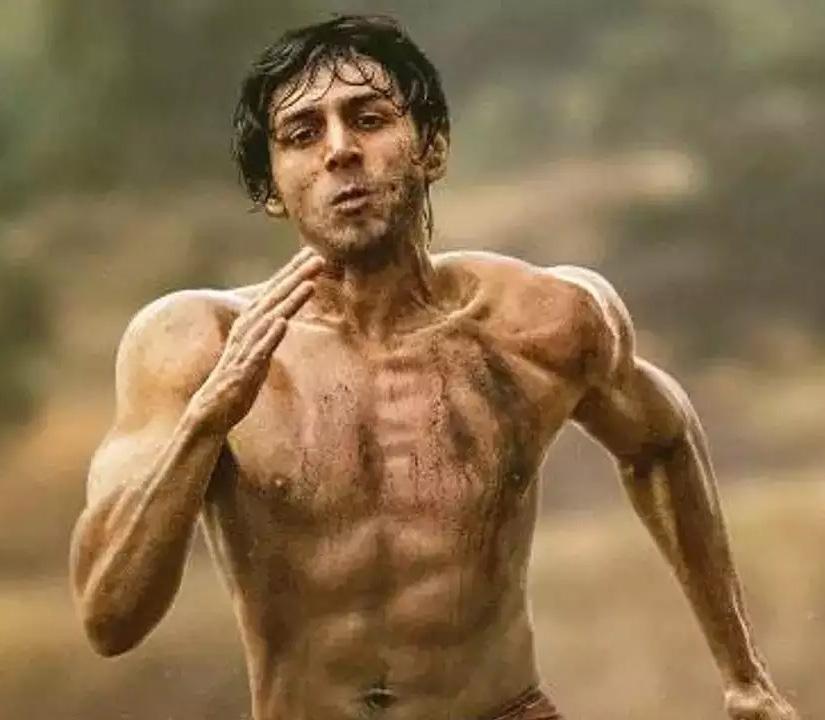
The actor underwent rigorous training for his part in the film. He even gave up on sugar for more than a year. To get into the skin of the character, Kartik followed a strict fitness regimen and lost 20 kg.
At the trailer launch of the film, director Kabir Khan praised Kartik for his dedication, stating that the kind of body Kartik has developed will stay with him for life as it’s completely natural. ‘Chandu Champion’ is based on Paralympic gold medallists Murlikant Petkar.
‘Chandu Champion’ is jointly produced by Sajid Nadiadwala and Kabir Khan. The film, directed by Kabir Khan of ‘Bajrangi Bhaijaan’ fame, is set to arrive in theatres on June 14.
FOR SAIYAMI KHER, SETTING APART TWO HOURS FOR TRAINING IS A COMMITMENT TO SELF-IMPROVEMENT
Actress Saiyami Kher, who is preparing for the Ironman race in Berlin, shared that, amid the chaos of the shooting, taking out a few hours for training is a commitment to selfimprovement. The race will be held in the quaint town of Erkner, 30 minutes away from Berlin, on September 15. To prepare for Ironman, her workout regimen includes swimming, cycling, and running.
Saiyami said: “Sport has been my sanctuary, fostering not just physical prowess but also mental fortitude. Undertaking the Ironman has emerged as one of my most daunting endeavours, an introspective odyssey of selfconfrontation.”
The actress added that it is a “relentless pursuit of personal growth, marked by incremental triumphs, the relentless pursuit of excellence, and the unearthing of one’s inner resilience.”
“Amid the chaos of a bustling shooting

schedule, carving out two hours daily for training serves as a testament to my unwavering dedication and unyielding commitment to self-improvement,” concluded the actress.
On the film front, Saiyami will be seen next in ‘Agni’, which celebrates and explores the lives of firefighters,
alongside Pratik Gandhi and Divyenndu Sharma.
The film is directed by Rahul Dholakia and produced by Farhan Akhtar and Ritesh Sidhwani under the banner Excel Entertainment.
Saiyami, the niece of actress Tanvi Azmi, made her acting debut with the Telugu film ‘Rey’ in 2015. She debuted in Hindi cinema in 2016 with ‘Mirzya’ alongside Harsh Varrdhan Kapoor, directed by Rakeysh Omprakash Mehra.
In 2018, she stepped into Marathi cinema with ‘Mauli’ starring Riteish Deshmukh. The actress was then seen in films such as ‘Choked’ and ‘Wild Dog’.
Saiyami has also worked in the web space with ‘Special OPS’ in 2020. She was later seen in the Abhishek Bachchan-starrer ‘Breathe: Into the Shadows’ and ‘Faadu’.
(IANS)
www.gdayindia.com.au | M: 0412-114-383 G’DAY INDIA | JUN 2024 33
Pritam. Kartik’s transformation shines through in the song with his toned muscles.
(IANS)
SONAKSHI
FINDS
IT ‘A BIT MORE DAUNTING’ TO BE A BUSINESS WOMAN
Actress Sonakshi Sinha, who has also stepped into the world of business with her nail label, said that being an entrepreneur is a bit more daunting as it doesn’t come “naturally to her.”
Talking about what’s more daunting, being an actress or being a business person, Sonakshi said: “I think acting comes like second nature to me and it has always been like I have learnt everything on the go, but I never felt uncomfortable doing anything. Right now, as an entrepreneur, that is something very very new.”
“I am again learning the ropes and I am involved as much as I can be. It’s something really different for me. I am really loving it. I feel that is a bit more daunting than acting was for me because it doesn’t come naturally.”
The actress added that “business is something I have to learn still, and I think I am doing pretty well at that.”
On the personal front, Sonakshi loves listening to music and shared that her playlist is very “diverse.”
“I love to listen to music that sounds good so you can find anything from Hindi film songs to Punjabi music to house music. I love percussion. I love a lot of instrumental songs with just beats,” said Sonakshi.
However, Punjabi music dominates her playlist.
“That is something you will find on my playlist. It’s very random list but I do listen to a lot of Punjabi music,” said the actress.
(IANS)


NIMRAT KAUR REFLECTS ON TWO DECADES IN INDUSTRY:
‘TRIED TO
ENJOY THE MOMENTS, NOT REST ON PAST LAURELS’
Nimrat Kaur, who started her acting career with the music video ‘Tera Mera Pyar’ in 2005, has reflected on her two decades of journey in the industry, sharing that she has tried to enjoy the moments, and not rest on past laurels. The actress featured in Kumar Sanu’s song ‘Tera Mera Pyar’ before doing a few commercials for television. She made her film debut with a small role in the English movie ‘One Night with the King’, before starring in the 2012 crime thriller ‘Peddlers’ directed by Vasan Bala.
Speaking her journey, Nimrat said, “So much has happened. I have learned so much. And I have enjoyed every bit of it. ‘Tera Mera Pyar’ was my first work on camera. I had just come to Mumbai... I was very fortunate that it came my way and opened the advertising world before me. I did a lot of ads after that. Then I did a lot of theatre.”
She added, “I have always been a student of life as an actor and tried to learn
every medium that I have explored. When I did ‘The Test Case’, it was one of the few web series to be made in India. I enjoyed every turn of this journey. I have tried to enjoy the moments, and not rest on past laurels or ‘ki wo experience jo tha wahi hona chahiye dubara’. ‘The Lunchbox waisi thi, waise hi dubara ho’. No experience is ever repeated in life.”
Nimrat, who last featured in the movie ‘Sajini Shinde Ka Viral Video’, said she enjoys life’s reality, adding that everything comes with its own set of problems and excitement.
“I don’t feel like it’s been 20 years... It feels like a lot, sounds like a lot. What happens with actors is when you are essaying a part, a part of your life and your years are gone. Time keeps passing by... It’s very interesting when you look back, I just like to experience my life through people and their reactions, and understandings,” she added.
G’DAY INDIA | JUN 2024 www.gdayindia.com.au | M: 0412-114-383 34
(IANS)
PRIYANKA CHOPRA CONGRATULATES INDIAN WINNERS AT CANNES FOR SCRIPTING HISTORY
Actress Priyanka Chopra Jonas, who recently lent her voice to the wildlife documentary ‘Tiger’ as a narrator, has congratulated the Indian talents that scored huge victories at the recently concluded 77th edition of the Cannes Film Festival. Priyanka took to the Stories section of her Instagram and sent her best wishes to the winners, Anasuya Sengupta, Payal Kapadia, and Chidananda S Naik.
While Anasuya won the Best Actress Award at Cannes, Payal’s film ‘All We Imagine as Light’ was feted with the ‘Le Grand Prix’ award, and Chidananda’s short film ‘Sunflowers were the first ones to know’ was honoured with the La Cinef Award for Best Short Film.
The actress shared three different stories, one each for Anasuya, Payal, and Chidananda. Lauding Anasuya, Priyanka wrote, “Congratulations @cup_o_t on your incredible performance and the history

you’ve created! Onwards and upwards.”
For Payal, she wrote that it was a moment for Indian cinema at the Cannes Film Festival.
The actress wrote: “Biiiig shout and congratulations to you all #PayalKapadia @kantari kanmani @divya prabha @ chhaya.kadam.75 @hridhuharoon.”
Priyanka wrote for Chidananda, “Congratulations @chidananda_s_naik So well deserved.”
India had one of its best years at the Cannes Film Festival this time. Payal’s film was screened at the Palme d’Or (main segment) of the Cannes Film Festival, becoming the first Indian film in 30 years to compete in the main segment after ‘Swaham’, which was released in 1994.
PREITY ZINTA WANTS ‘MORE UNDERSTATED, WELL-STRUCTURED CLOTHES’ TO MAKE A COMEBACK
Actress Preity Zinta has talked about the fashion statement that should make a comeback and said that she would want more “understated and well-structured clothes with less drama.”
Preity, who presented Santosh Sivan with the prestigious Pierre Angenieux ExcelLens in Cinematography award at the 77th Cannes Film Festival, shared her insights during a chat with Vogue India. The actress took to her Instagram on Sunday morning and shared a video from the chat, in which she was asked about a fashion statement that should make a comeback.
“Fashion goes around in circles anyway, so what I would like to bring back is more understated, well-structured clothes, less drama,” she replied.
Talking about her hair care routine to maintain her beautiful hair, Preity said: “Going back to grandmother basics of simple things like oiling your hair.”
For Preity, not eating and starving is a fitness dealbreaker.
“This whole thing about don’t eat (and) starve yourself it’s not fitness. Portion control is very important. There is nothing more anti-ageing, nothing healthier than working out, and sleep is important,” she said.
When asked about a lesson she has learned about motherhood, the actress replied: “It’s not all about me. It’s all about them now, and I think unconditional love.”
The actress wore a subtle pink saree to present the award to Sivan.
Decoding her look, she said: “It’s a designer I have never worn before. It’s a beautiful saree. She’s called Seema Gujral. My beauty looks are mostly the same. They’re simple, understated, with a little sparkle.”
(IANS)

www.gdayindia.com.au | M: 0412-114-383 G’DAY INDIA | JUN 2024 35
(IANS)
Did you know:
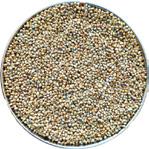
Being rich in fibre content, bajra works very well in diabetes. Gradual release of blood sugar in the bloodstream helps keep the glucose levels normal
How To Eat Better
It's crucial to choose nutrition over convenience in the fast-paced world of today. Our dietary decisions have a big impact on our health, affecting how we control our weight and prevent chronic diseases. A balanced nutrition strategy and mindful eating are crucial for general health. Our bodies perform best when we feed them nutrient-dense meals like whole grains, lean proteins, colourful fruits and veggies, and healthy fats. At the same time, it's important to pay attention to our bodies' signals of hunger and fullness and to portion sizes.
In addition, a fresh, contemporary diet is introduced every time we blink. A fad diet might be harmful to your overall health. The macro and micronutrient requirements will differ from person to person, so it's vital to keep in mind that following a diet without a doctor's advice can cause more harm than good.
The need of seeing a doctor before beginning a diet cannot be overstated. However, the following advice will assist you in adopting a balanced nutrition strategy while still enjoying the pleasures of eating properly.
Tips for improving your nutrition:
Colour Your Plate: Boosting Wellness with Fruit and Veggies
Revitalize your eating habits by adding more fruits and veggies to your plate! Boost your health effortlessly with the UK's NHS '5 A Day' recommendation. Jazz up your meals with vegetable sides and refreshing salads, indulging your taste buds with vibrant flavors. Don't forget the mouth-watering goodness of fresh, seasonal fruits-nutritious and delicious! And here's a surprising tip: kickstart your meals with greens and protein. This simple trick slows down carbohydrate absorption, benefiting those managing diabetes or prediabetes. With these small but powerful changes, you'll be on your way to a healthier, more vibrant lifestyle.
Hydration Habits
To maintain optimal bodily functions, it is crucial to provide our bodies with an adequate amount of fluids. The general recommendation is to consume
approximately eight glasses of water per day, although this may increase in situations involving physical exertion or exposure to hot weather.
While any non-alcoholic beverage can contribute to your daily fluid intake, opting for tea and coffee, unsweetened lemon juice, thin buttermilk, are wiser choices compared to sugary carbonated drinks. It's worth noting that juices or smoothies without added sugar may still contain naturally occurring sugars that can have a negative impact on your dental health.
Limiting Saturated Fat and Sugar
Understanding the impact of fats and sugars on our health is vital. Saturated fats are generally considered unhealthy, while unsaturated fats are healthier, but in moderation. Reducing saturated fat intake, often found in processed foods and oils, is crucial for overall well-being. Similarly, managing sugar consumption is important to prevent issues like obesity and tooth decay. Being mindful of added or naturally occurring sugars in food and drinks, limiting intake to under 5 grams per 100 grams, helps maintain a balanced diet. By making healthier fat choices and monitoring sugar intake, we can promote better health and wellbeing.
Active Living: Enhance Your WellBeing
Nutrition goes beyond just food; it encompasses staying active in our modern, often sedentary lives. For individuals with desk or office jobs, it's crucial to prioritize frequent movement rather than solely focusing on achieving milestones or goals. Regular movement not only aids in weight management but also establishes a cyclical relationship between mobility and body fat. Increased physical activity enhances the chances of burning fat and maintaining a healthy weight range. Conversely, a lower weight provides a boost of energy, motivating us to stay active. By recognizing the synergy between nutrition and staying active, we can unlock a healthier and more energized lifestyle.
Sodium Savvy
Recommended salt intake for adults and children over 11 is around 6g/day. Excessive salt consumption raises the risk of high blood pressure, a precursor to heart disease and stroke. When it comes to packaged foods, check the labels for salt content. Products with over 1.5g/100g should be consumed in moderation or avoided altogether.
Cravings and Comfort: Understanding the Connection
Comfort food holds a special place in our hearts, often being sweet, fried, or high in fat. While they should be enjoyed occasionally within a balanced diet, moderation and portion control are key. Overindulgence can lead to regret and excess calories. Restricting these foods completely may result in feelings of deprivation and mood swings. Seeking guidance from a medical professional or health coach allows for a tailored approach, accommodating your favourite foods and drinks in reduced frequency or quantity.
Mood, mind, and food
Our emotional state greatly influences our dietary choices and overall wellbeing. Stress, anxiety, and burnout have become prevalent in urban and professional lifestyles, impacting how and what we eat. During times of stress, food can provide comfort and a sense of control, but relying on it as an escape may lead to overeating. By fostering awareness of mental health conditions and practicing emotional regulation, we can cultivate emotional resilience and work towards achieving our health goals.
In conclusion, healthy eating is a gateway to a vibrant and fulfilling lifestyle. It is crucial for individuals to find a way of eating that truly satisfies them. Further helps to have an expert doctor or a dietitian guide you towards the right diet. Embracing a balanced nutrition approach, can energize our bodies, boost our immune system, and enhance our vitality. Eat well and thrive! After all, we are what we eat!
By Rahul Maroli
G’DAY INDIA | JUN 2024 www.gdayindia.com.au | M: 0412-114-383 36 FOOD
bon appétit
From Passion to Plate: Rahil Shaikha's Mad Mex Journey
Newcastle Entrepreneur Opens His First Mad Mex Store
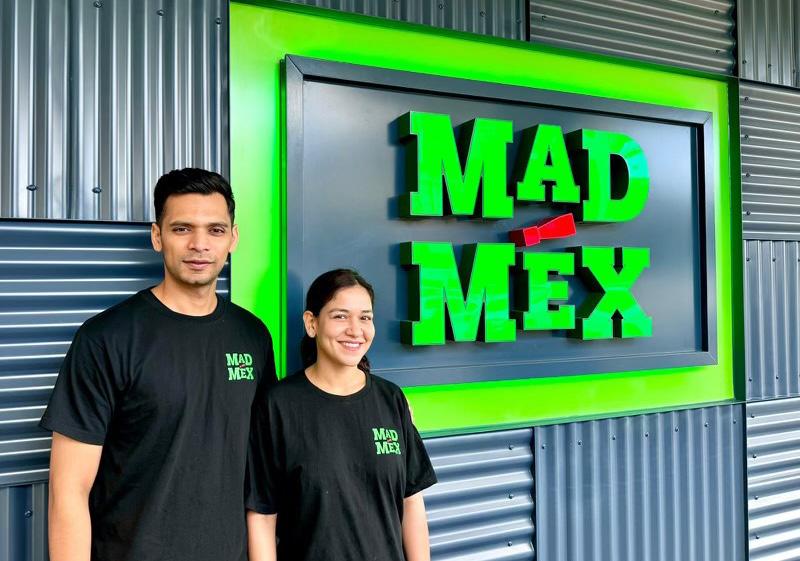
It was Rahil Shaikha’s passion for fresh, healthy food that piqued his curiosity to explore owning a Mad Mex restaurant and becoming a franchisee.
As a Newcastle local familiar with the Mad Mex brand, Rahil spotted an opportunity to buy the Mad Mex Newcastle Marketown store.
With its burgeoning community feel in the heart of the Newcastle CBD, and its reputation as one of the most popular shopping centres in the area, Mad Mex Marketown was an attractive business proposition to Rahil.
“I have loved the Mad Mex brand for a long time and as a customer myself, loved their healthy and fresh food philosophy, so I saw buying my own store as a recipe for success,” said Rahil.
“I felt connected to Mad Mex’s brand purpose, mission, and ambition. As a premium fast casual dining restaurant, their customer-centric approach and their franchisee support model was very appealing.”
So, armed with an MBA and a keen business sense, Rahil set out on a path to business ownership of the Newcastle store in December 2023.
“One of the most attractive parts to becoming a Mad Mex business owner was the franchisee support that Mad Mex offers,” said Rahil.
Through the Mad Mex Franchisee program, Rahil receives extensive support and guidance from the franchisor through the areas of marketing, training, systems and tools and operations.
“The simplicity and support provided by Mad Mex in starting a franchise were significant factors in my decision. It was well-structured and organised from the first expression of interest submission, to presenting a business plan and meeting the leadership team.
The franchisee process and beyond has been incredibly supportive. Mad Mex
assisted with aspects such as construction, and leasing and provided comprehensive training and guidance to ensure the smooth establishment and operation of the franchise.”
As Rahil looks back on the first day when he and his wife Sana opened the doors, it’s met with a remarkable sense of pride.
“Serving our first customers was one of the best moments of our lives and continues to be, as well as the positive impact we make on our community every day.
“The most enjoyable aspect of being a Mad Mex franchisee is the opportunity to contribute to the community by providing job opportunities, especially for international students. Additionally, witnessing the growth and success of the restaurant is highly rewarding.”
For anyone considering buying into Mad Mex as a franchisee, Rahil’s advice is “if you put in the hard work and dedication to grow a successful business, then this, combined with the support provided by the Mad Mex support office, makes the process highly rewarding. Potential franchisees should be passionate about food, adept at running operations, and committed to the success of the business.”
As for the future, Rahil says “the future looks so bright and promising with continued growth and success.”
To find out about how you could become a Mad Mex franchisee, please contact: franchising@madmex.com.au www.franchising.madmex.com.au

www.gdayindia.com.au | M: 0412-114-383 G’DAY INDIA | JUN 2024 37 ADVERTORIAL
Strengthening your immunity during winter months

 BY DEEVYA GUPTA
BY DEEVYA GUPTA
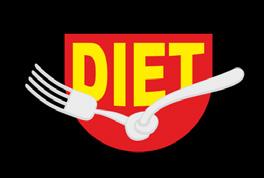
Nutrition can help build an extra layer of immunity, especially during cooler months. Let’s take a quick look at what vitamins and nutrients can help. If you are already feeling like you are coming down with a cold, there are also natural remedies to help assist with your recovery.
Vitamin C
Vitamin C can assist with immune functioning and is very easily found in our everyday foods such as fruits (citrus), lemons and even vegetables such as capsicum and broccoli.
Vitamin D
Our population within Australia is commonly at risk of vitamin D deficiency. If you are not getting your 30 minutes of sunshine daily in the winter months, then you may consider having vitamin D supplements. It is always advised to check with your doctor your vitamin D levels through a blood test and this will be the best indicator as to how much you should take. Vitamin D is rarely found in foods, however there are a few food sources that contain small amounts such as: Eggs, salmon, some fortified milks and margarine. The main source will be sunlight and supplementation. Vitamin D has a very

important role in keeping up immunity as well as overall health. A deficiency in Vitamin D has been linked to several underlying health conditions.
Continue to have a well-balanced diet and keep the gut strong
With a variety of fruits and vegetables, you will also be having an intake with a variety of nutrients and vitamins entering your body. It is important to keep up the variety and balance as this is what makes up an overall healthier body response to fighting off colds. Aside from the extra vitamins and nutrients

fruits and vegetables also provide fibre or prebiotics for your gut to use to improve the overall health of your gut. A healthy gut (balance of good and bad bacteria that naturally lives in the gut) will also assist in building up immunity and keep you happy from inside and out. It is easier to have the recommended 5 serves of vegetables and 2 serves of fruits per day if you try to incorporate it in more than 1 meal per day. Keep well hydrated
It may be the last thing on your mind during cooler months but it is very easy to become dehydrates especially when the heaters are running. Keep up your recommended minimum of 8 glasses per day as this will help keep your body flushing out all the daily toxins and keeping your cells well hydrated.
Warm water is absolutely fine to have if it is easier for you to drink in the cold weather. If you don’t enjoy the taste of plain water, you can flavour it with a slice of lemon or your favourite fruit for flavour.
Drink alcohol only in moderation (if any)
Alcohol intake has been linked to reduced immunity, therefore only keeping to small and irregular amounts in moderation may help restore your body’s immunity. The current recommendation suggests that if you drink, you have no more than 10 standard drinks in one week and you have at least a few alcohol-free days during the week.
Follow a balanced lifestyle approach
Remember to keep up with your body’s sleep requirements, reduce as much stress as possible, keep up exercise and avoid smoking wherever possible for optimizing your body’s immune system.
G’DAY INDIA | JUN 2024 www.gdayindia.com.au | M: 0412-114-383 38
Deevya Gupta is an Accredited Practicing Dietitian in Melbourne | W: www.abcofnutrition.com.au
DIET
Seafood Stew

This healthy, delicious Seafood Stew is one pot casserole. Quick and easy to make, ideal for cold winter nights. The herbs and spices used in this recipe aren’t overpowering and allow you to appreciate the natural flavours and textures of the flaky fish and meaty prawns. If preferred, add a dash or two of Tabasco for a little extra kick.
Ingredients:
• 500g firm white fish, cubed
• 300g peeled raw prawns
• 500g potatoes
• 2 dried red chillies, deseeded
• 1 large onion, chopped
• 4-6 garlic cloves, chopped
• 3 med tomatoes, chopped
• 1 ½ tsp ground cumin
Method:
1. Heat the olive oil in a large saucepan. Add the onion, garlic and salt and cook for 3 mins.
2. Break and deseed the dried chillies and add to saucepan along with the cumin, paprika and tomatoes. Stir to mix well.
3. Pour in the stock and bring to a boil. Reduce the heat and simmer for about 5 mins.
4. Puree the stock mixture until very fine. Pour the mixture back into the pan and bring to a boil and reduce to simmer.
5. Gently add the fish, prawns and potatoes and stir. Cover and cook until tender, for about 10 mins.
6. Add the lime juice and chopped coriander.
7. Serve hot.
Variation
Add
BY MANJIT SETHI
from the private collection
or
Serve: Garnish:
with coriander and lime wedge
serve with crusty bread roll, garlic bread or corn chips
GHEE AND K-WAVE CUISINE TO TAKE CENTER STAGE IN 2024 INDIAN CULINARY LANDSCAPE
In an ever-evolving culinary landscape, the theme of Provenance signifies the exploration and amplification of the depth and diversity of Indian cuisine, it not only connects us to the origins of our food but also highlights the need for sustainable practices that preserve our culinary heritage.
Godrej Vikhroli Cucina, a curated, brandagnostic, owned media platform hosted a star-studded launch for the highly anticipated Godrej Food Trends Report 2024 at the glamorous Godrej L’Affaire 2024. The report, under the theme ‘Provenance’, explores the rich tapestry of India’s food culture, delving into the diverse origins of ingredients and India’s culinary practices.
The report highlights conscientious eaters who seek transparency and authenticity and gravitate towards products that champion the values embedded in their journey from farm to plate.
Commenting on the 2024 edition of the report, Tanya Dubash, Executive Director & Chief Brand Officer, Godrej Industries Limited and Associate Companies, said, “The Godrej Food Trends Report 2024 marks another milestone in our quest to spark conversations and identify trends in the food industry. Consumers are getting savvier about their diets, focusing
on mindful nutrition. With a focus on Provenance, this edition celebrates India’s rich culinary heritage and invites readers to explore the myriad flavours and cultures that define our nation. I am confident that readers will be captivated by the depth and diversity of insights offered within this edition, further solidifying India’s position as a global leader in the realm of food and gastronomy.”
Some key insights from the Godrej Foods Trends Report 2024 are:
Authentic cuisine will drive travel experiences: Experts forecast that 92.3% of travellers will join Culinary site tours to enrich their travels through authentic culinary encounters
Bespoke cocktails will raise the bar: Experts reveal that dedicated menus around Indian-origin spirits will illuminate the bar scene in 2024 by 82.7%
Chocolate will become a sophisticated affair: Indian chocolatiers are increasingly showcasing the unique nuances of Provenance by artfully combining locally grown, high-quality, cacao beans as experts report a 94.2% in artisanal chocolates.
K-food will become mainstream: Korean culture has been garnering a cult following, with its bold flavours and diverse dishes.
Korean restaurants will see significant traction, with concepts like teppanyaki, robata, and ramen becoming increasingly prevalent.
Ghee will rise again: From healthconscious millennials to flavour-driven foodies, ghee’s natural goodness, will have a renewed appeal by 84.6% as we take inspiration from culinary roots.
Women in food will be in the spotlight: 2024 will illuminate the pivotal role women have played in the culinary landscape of India. From regional custodians to food entrepreneurs, chefs, bartenders and brewers, women will finally get due recognition for their contribution to shaping Indian gastronomy.
“India’s soft power is our cuisine and its sheer diversity, and the power of our history, plurality, and continuity. So, I am happy to see it finally valued for being authentic and unapologetically true to itself. For the longest time, we have been carpetbombed with a generalized idea of Indian food defined by political boundaries. But whatever prism you use to break it down by, the context for regional cuisines will always be the geography, agriculture, climate, and culture of a place,” shares Celebrity Chef Ajay Chopra. (IANSlife)
www.gdayindia.com.au | M: 0412-114-383 G’DAY INDIA | JUN 2024 39 RECIPE
clams, mussels, squid
any of your favourite seafood
• 1 -2 tsp paprika • Salt to taste • 1 tbsp. olive oil • 3 cups chicken stock • Juice 2 limes • 3 tbsp.
finely
coriander, chopped
ASTROLOGY
Mesha (Aries)

The picture of your financial prospects this month is none too bright, There is a distinct likelihood that your relations with your superiors would nose-dive to such an extent when serious losses clearly loom over the horizon. This, you should prevent by some advance actions and foresight.This monthis not be very favourable for any investment of launching new ventures.
Best days: 3, 12, 30
Lucky Colour: Red, Orange, Cream
Simha (Leo)

This month your financial prospects look quite good and could well establish you on a permanently sound footing. Many of you can look forward to reaping a rich harvest of sudden gains. Others would gain through speculation, which would also bring in rich profits. And, finally, your relations with your superiors would assume such pleasant dimensions that you would stand to gain very much from these.
Best days: 5,3
Lucky Colour: White & Orange
Dhanu (Sagittarius)
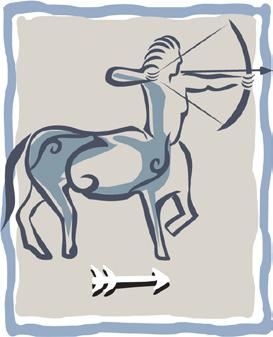
This month is not seems well for your financial prospects. To begin with, there is a distinct possibility of your relations with your superiors taking a nose-dive. So much so that serious losses would become very probable. This, you must prevent by some foresight and advance action. Speculation would also almost certainly result in serious losses to some of you
Best days: 9, 18
Lucky Colour: Red, Blue
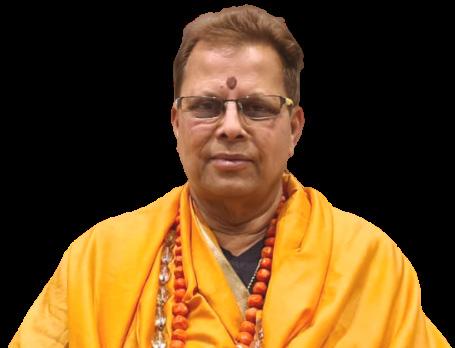
Vrishabh (Taurus)

Nothing very favourable about your financial prospects this month. You would tend to quarrel with your superiors creating an impasse in your relations with them, which could well result in a serious loss to you. Take care, therefore, to prevent such an eventuality by taking whatever preventive measures you can think of.
Best days: 9, 18, 27
Lucky Colour: Green, Blue
Kanya (Virgo)

A gainful month, in so far as your financial prospects are concerned. Many of you can look forward to reaping a rich harvest of sudden gains. Speculation would also benefit quite a few among you. Further, this month you will have a manner of handling your superiors, which would make the relationship very beneficial for you. This could well be an important gain.
Best days: 3, 12
Lucky Colour: Orange, Green
Makara (Capricorn)

A month during which you may look forward to enjoying good health with the blessings of the stars. You would not only be in good health, but also appear to be healthy, with your system deriving full advantage from your diet. Those inclined to assess their generative powers would be pleasantly surprised to discover that their faculties are if anything above normal.
Best days: 1, 3, 4
Lucky Colour: White, Green, Blue
By D. Narayan (Tantracharya) M: 0425 660 220
Mithuna (Gemini)

This month, your financial prospects are quite bright, You could be a stone’s throw from
a sudden gain and not know it. This month most of you would reap a rich harvest of sudden gains. Most of you would also be able to derive quick benefits from your pursuits. There are chances that speculative activity would also prove quite gainful.
Best days: 2, 7, 9
Lucky Colour: Red, White, Yellow
Tula (Libra)

Not a very favourable month for your financial prospects. Speculation is almost certainly going to result in losses for some of you. It would, therefore, be a good idea to stay away from gambling of any variety. There are also grounds, to predict that you would tend to be quarrelsome with your superiors to such an extent that your relations with them nose-dive, resulting in serious losses for you.
Best days: 9, 18
Lucky Colour: Red, Blue
Kumbha (Aquarius)
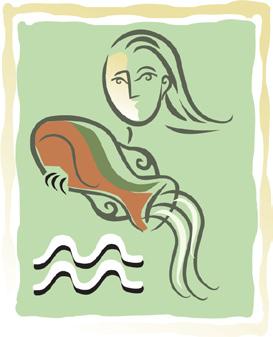
The blessings of good fortune for your health are not forthcoming this month. You will have to pay extra attention to and devote greater care on your health during the ensuring period. Any complaint of the digestive organs should be attended to forthwith, with appearance of the first symptoms. If this is done, a lot of possible problems would be obviated.
Karkat (Cancer)

A very helpful, month in so far as your financial prospects are concerned. Many of you would reap a rich harvest of sudden gains, that are likely to come your way. Others would gain from speculative activity, making handsome profits. Most of you would be able to derive quick, useful results from your efforts. Others among you would have a way of handling your juniors.
Best days: 9, 18
Lucky Colour: Red, Blue
Vrishchik (Scorpio)

A fruitful month in so far as your professional prospects are concerned. Practitioners of the fine arts and others of their ilk would have an extremely satisfying time. In fact, some of you may well go on to make a mark for yourselves with your contributions. There are indications that you would tend to work quite hard and go for your objectives efficiently. And in this you shall succeed.
Best days: 1, 3, 4
Lucky Colour: Red, Orange
Meen (Pisces)

There are practically no encouraging signs for your financial prospects this month in the augury from the stars. Most of you could well find yourselves working quite hard and struggling to realize your pending targets, and not getting anywhere because of a set of adverse circumstances. To top it all, the climate would not be at all encouraging for the expansion of operations or for the launching of new ventures.
Lucky Colour: White, Green, Blue Lucky Numbers - 5, 3, 6
Best days: 2, 7, 9
Lucky Colour: Red, Yellow, White
G’DAY INDIA | JUN 2024 www.gdayindia.com.au | M: 0412-114-383 40

What’s In the Name!
I met a surgeon who named his son Naïf (pronounced Knife).
I said what an apt name! Then I came to know the following:
1. Lawyer’s daughter: Sue.
2. Radiologist’s son: Ray.
3. Ophthalmologist’s daughter: Iris.
4. Florist’s daughter: Rose.
5. Mechanic’s son: Jack.
6. Archaeologist’s son: Doug.
7. Thief’s son: Rob.
8. Gymnast’s son: Jim.
9. Jeweller’s twin daughters: Ruby and Pearl.
10. Ornithologist’s son: Robin.
11. Orthopedician’s son: Boney.
12. Barber’s son: Harry.
13. Solicitor’s son: Will.
14. Accountant’s son: Bill.
15. Horticulturist’s daughter: Ivy. 16. Gardener’s son: Pete.
17. Monarch’s son: Prince.
18. Dramatist’s daughter: Oprah.
19. Sanitation engineer’s son: John.
20. Highway engineer’s son: Miles.
21. Dietician’s daughter: Olive.
22. Actor’s son: Oscar.
23. Photographer's son: Click.
24. Gastro-physician's daughter: Enema
25. Homeopath's daughter: Arnica.


41 G’DAY INDIA | JUN 2024 www.gdayindia.com.au | M: 0412-114-383 41
HAVE A LAUGHHave a laugh...

G’DAY INDIA | JUN 2024 www.gdayindia.com.au | M: 0412-114-383 42

43 G’DAY INDIA | JUN 2024 www.gdayindia.com.au | M: 0412-114-383 43

WWW.MINDBLOWINGFILMS.COM

































 BY GURPAL SINGH
BY GURPAL SINGH





















































 BY DEEVYA GUPTA
BY DEEVYA GUPTA






















